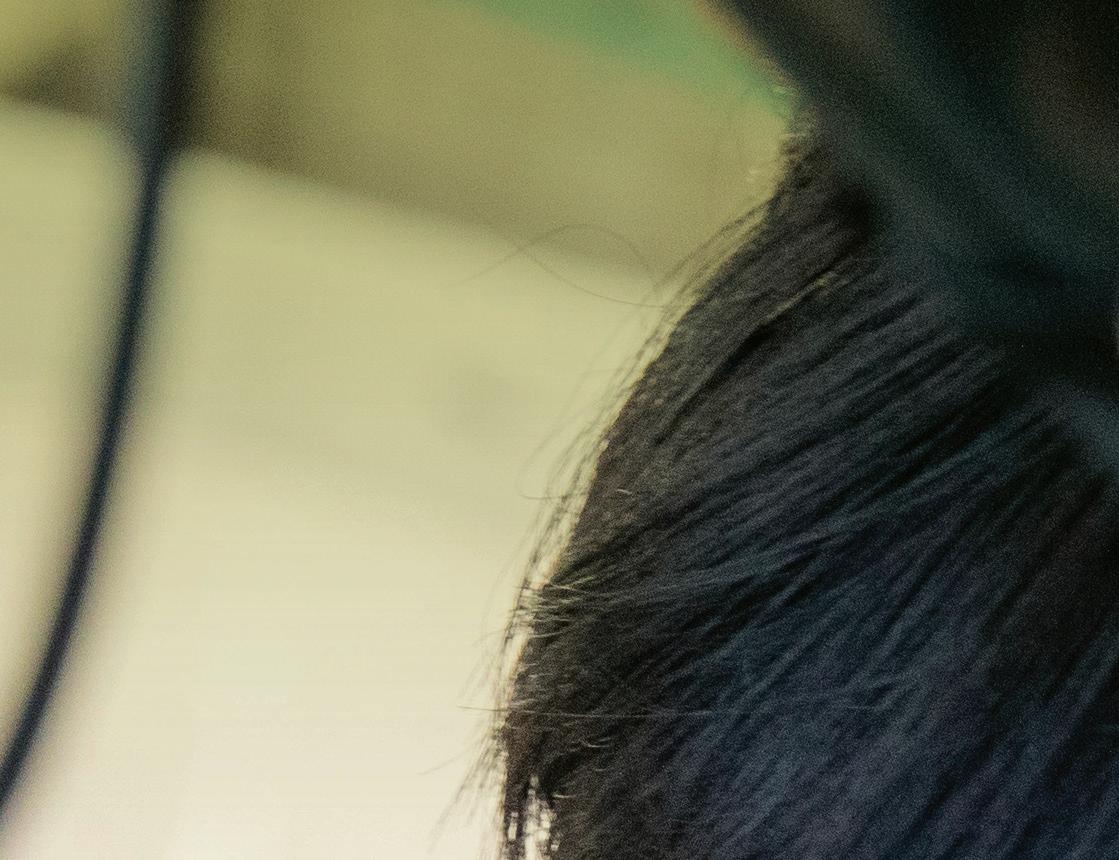
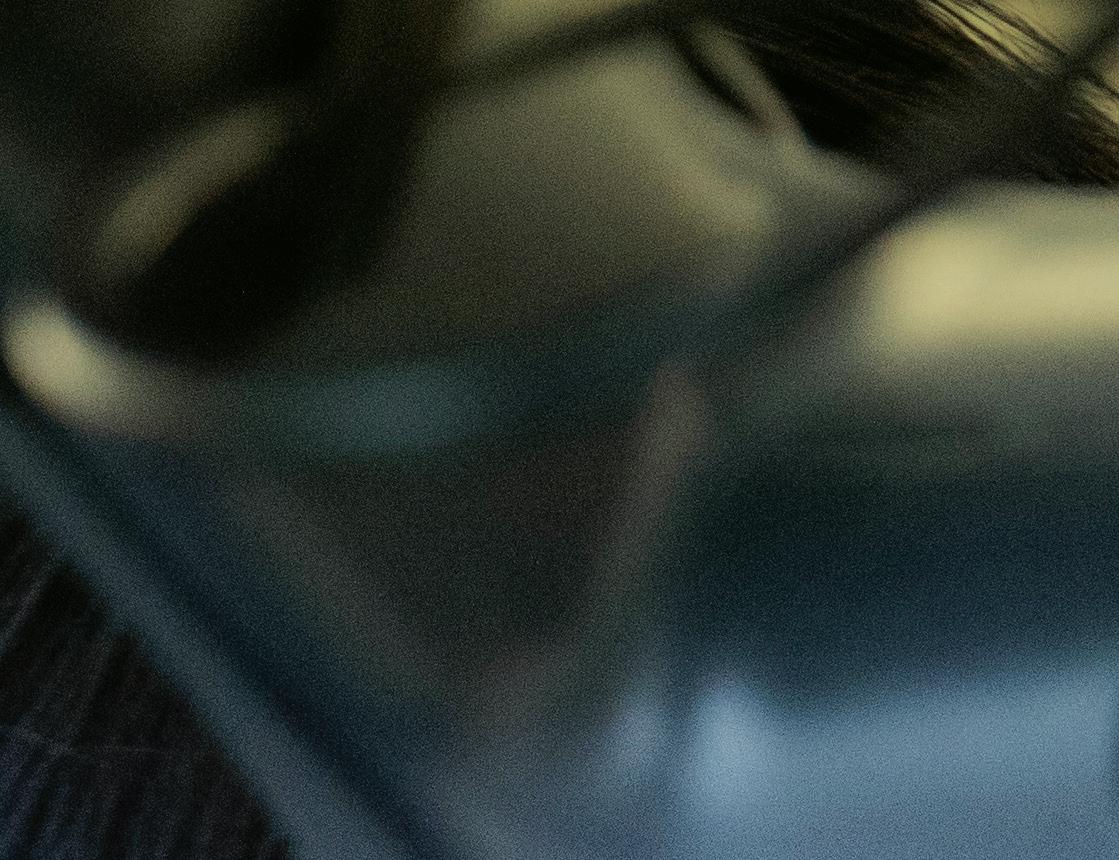
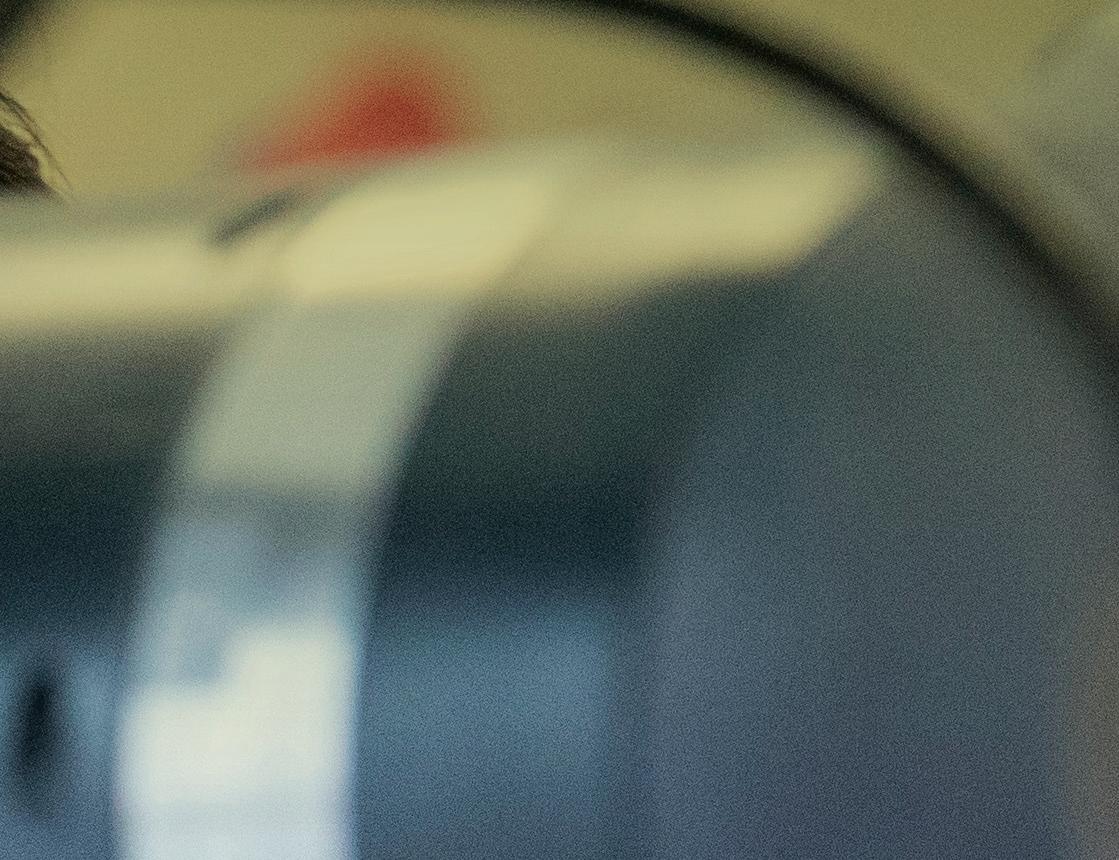

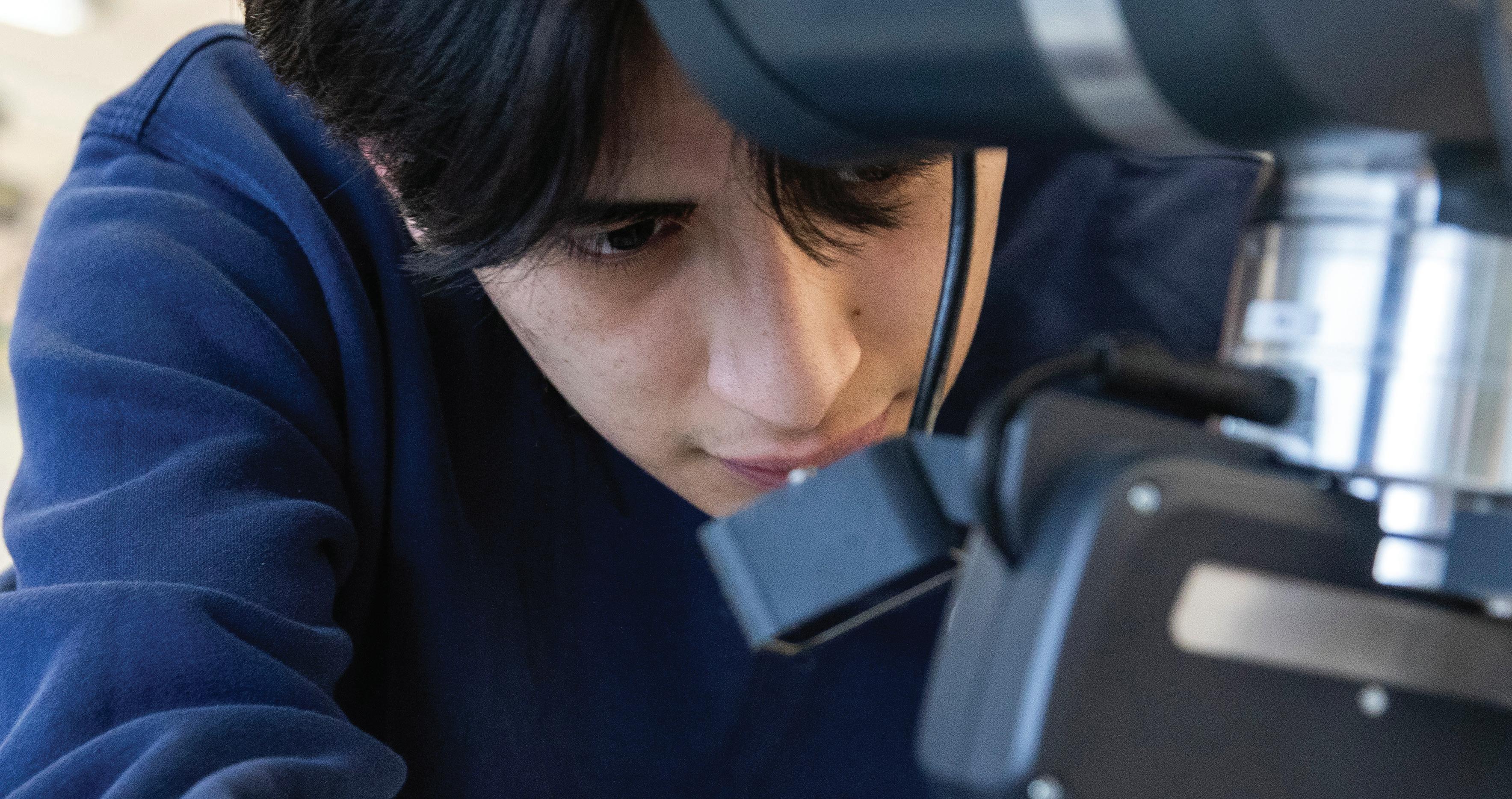
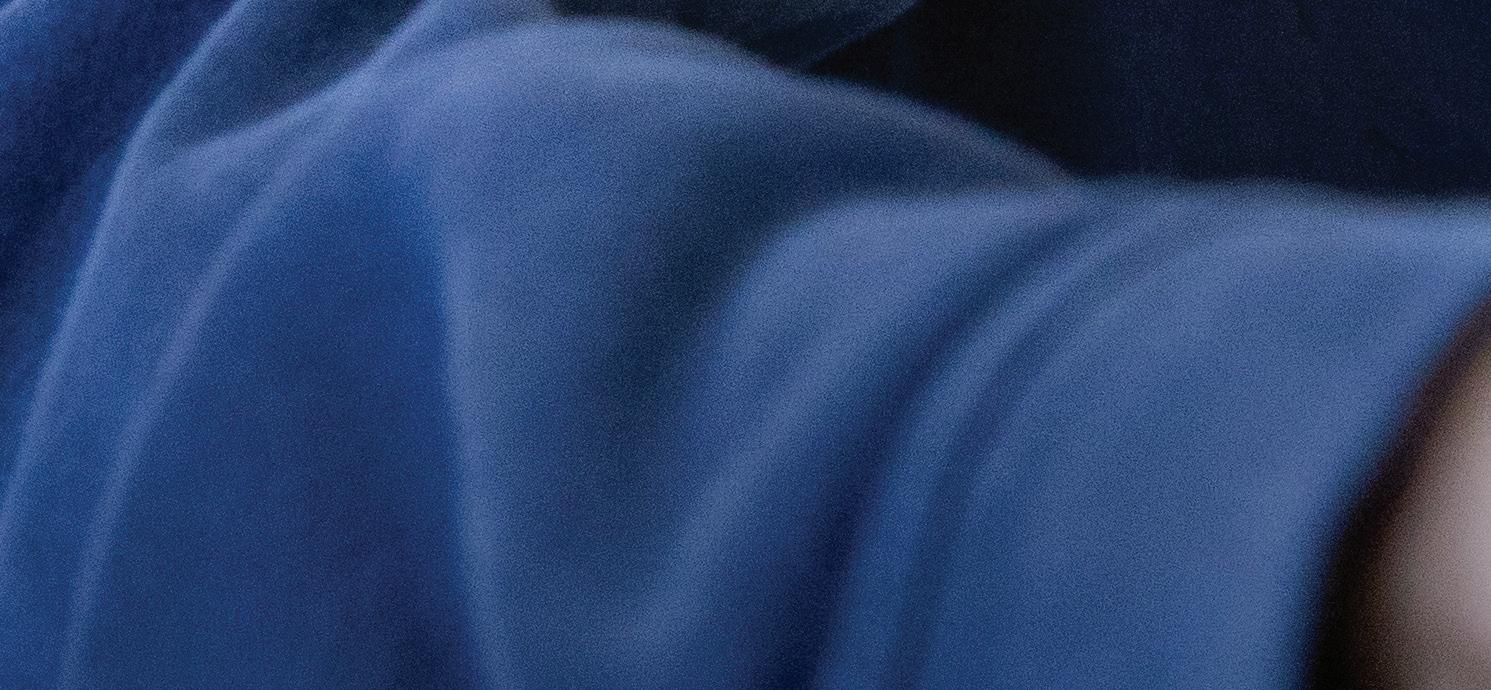


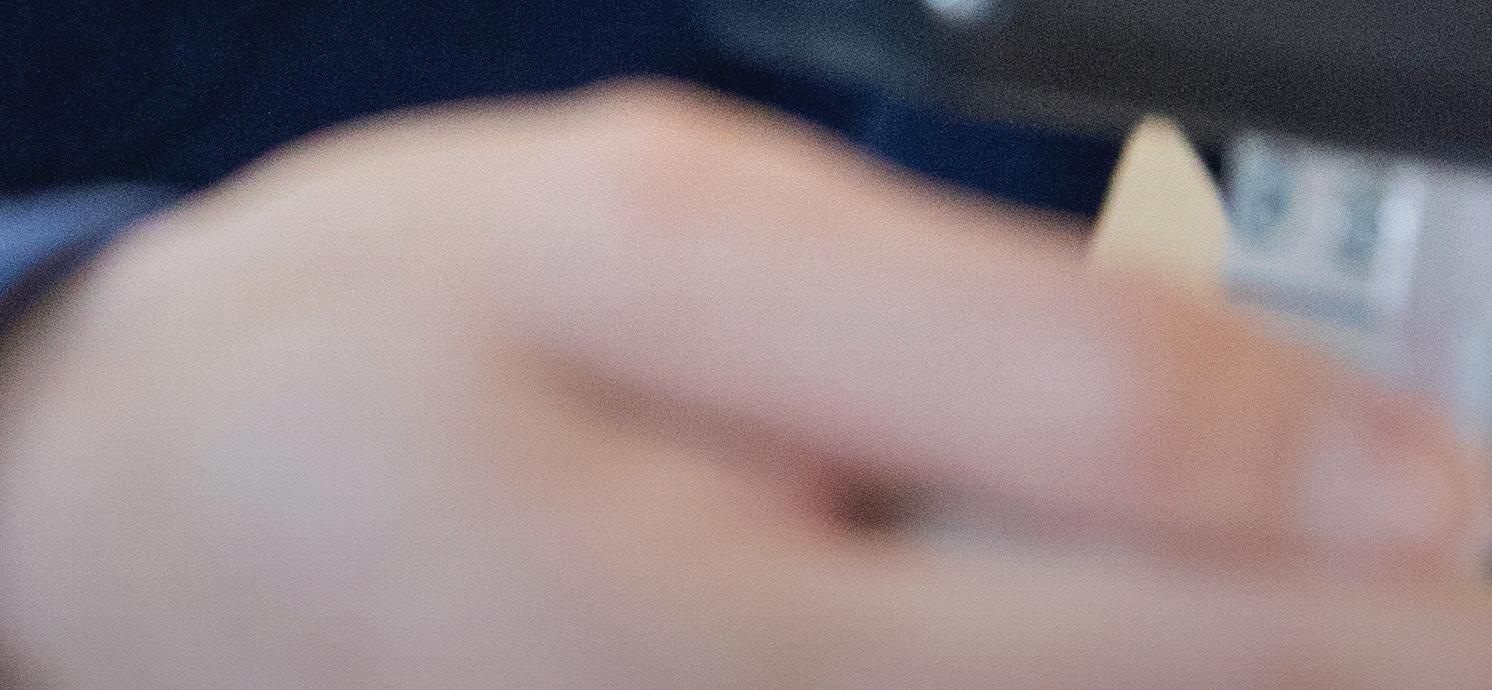


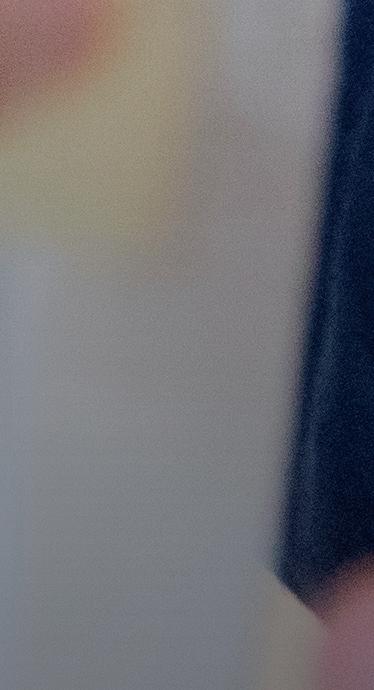
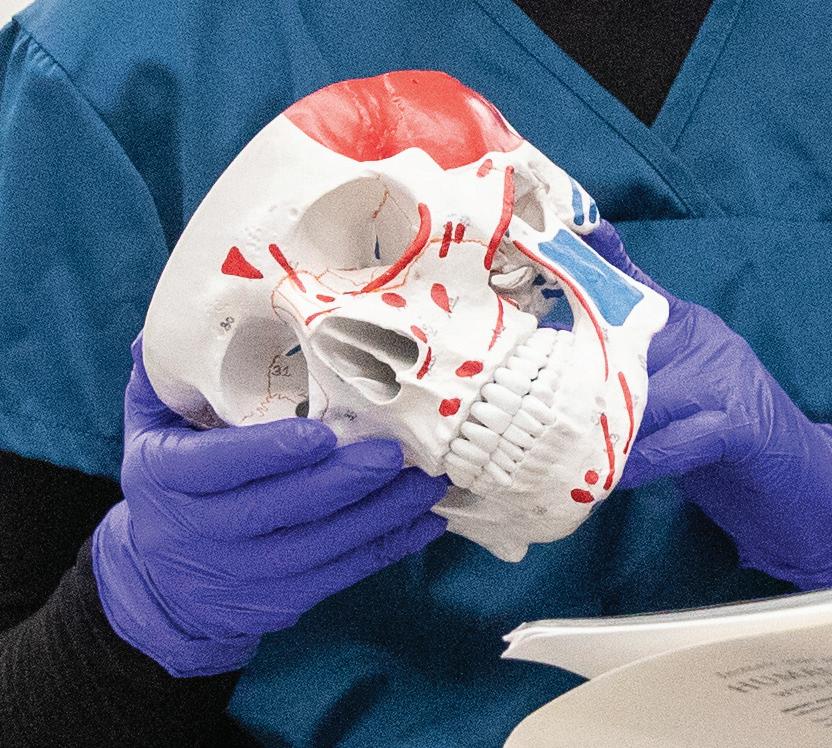
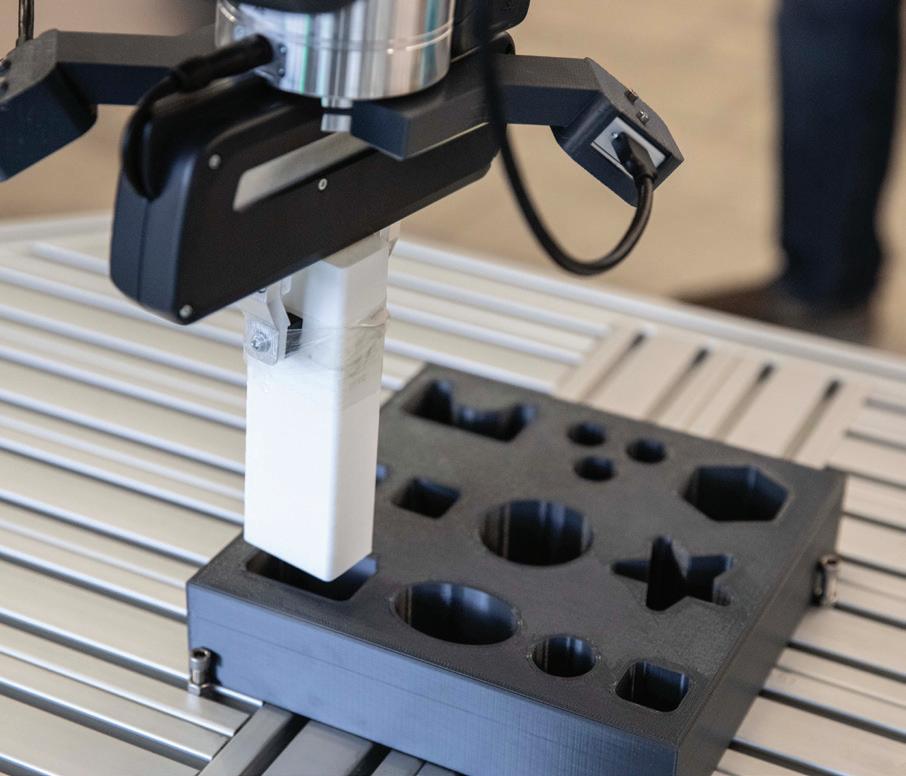
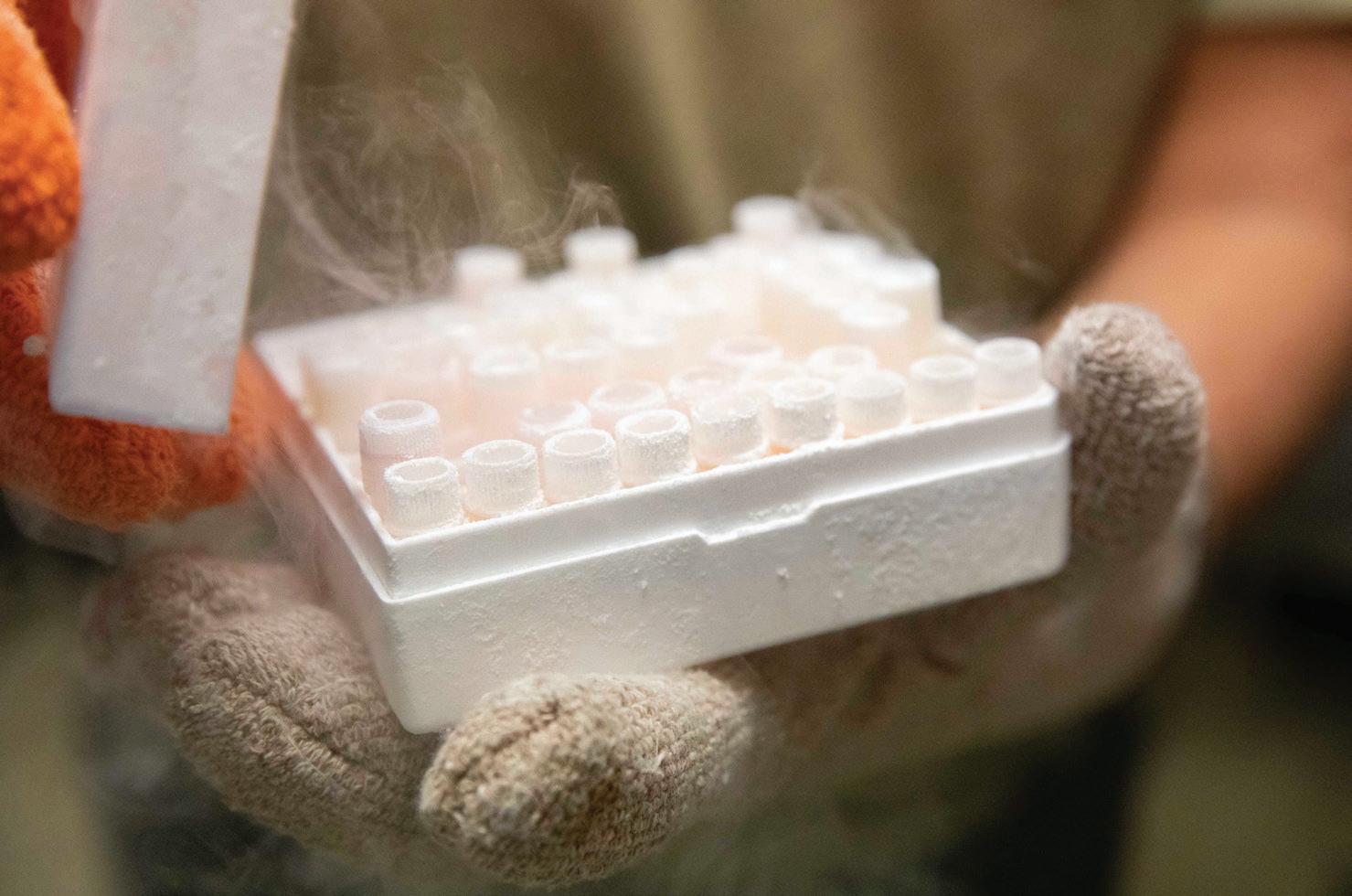
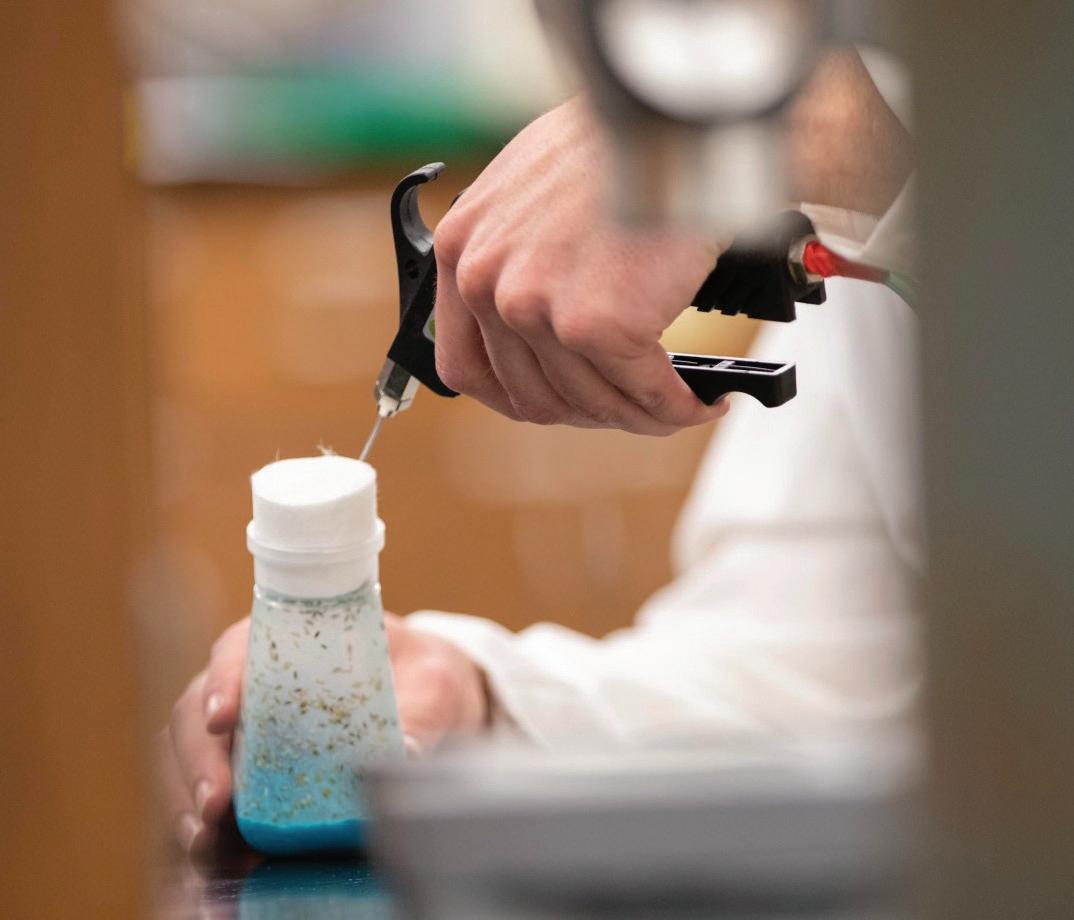
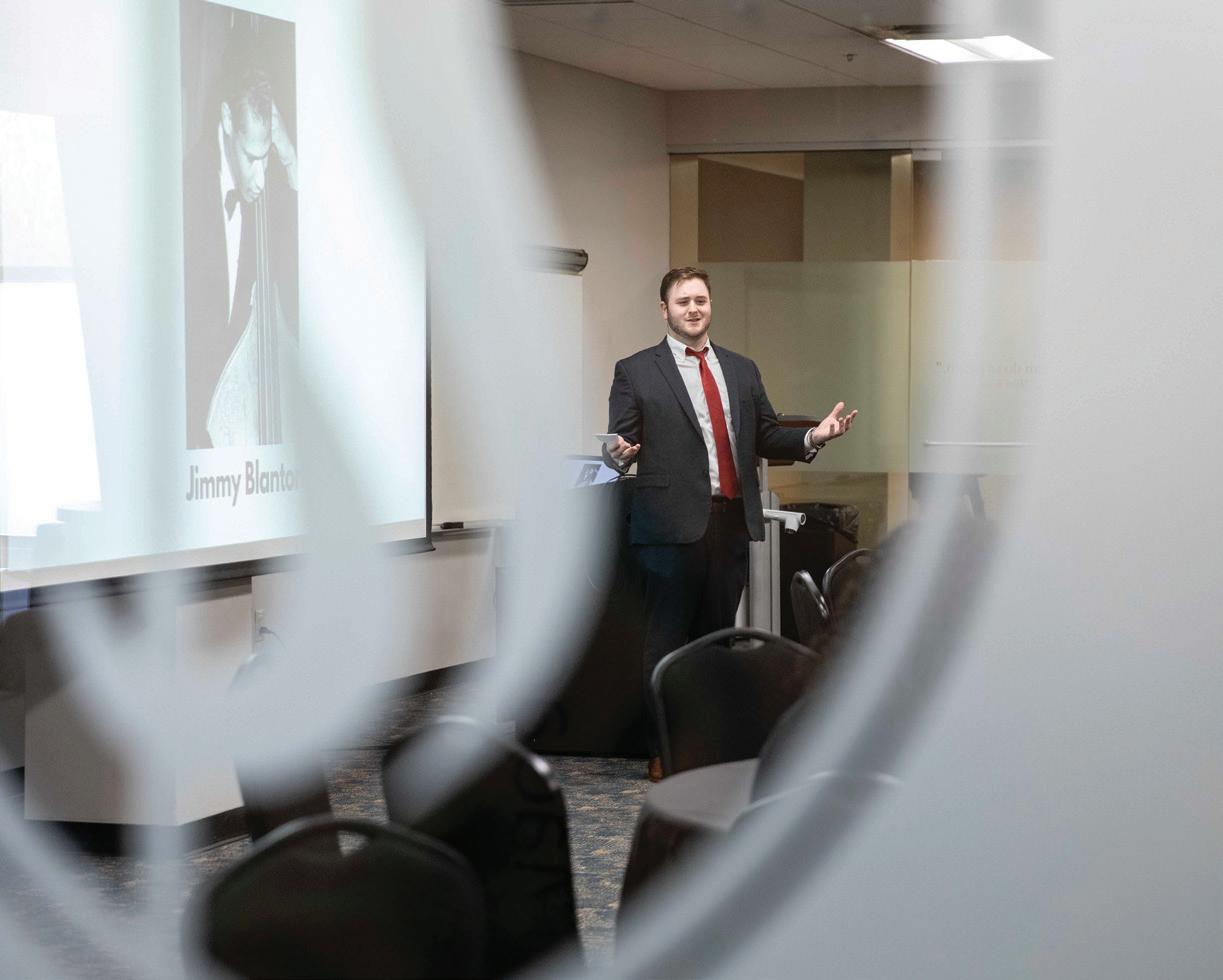


















On our campus, research advances two of our core goals here at Lipscomb. It displays our academic excellence and also reflects our mission to serve others through innovation, curiosity and meaningful impact. This edition of Discovery highlights just a glimpse of the powerful work happening across our campus and beyond.
Our momentum is growing. With a new Carnegie classification and increased HERD funding, Lipscomb is stepping confidently into the next phase of research excellence. Although these recognitions are important, it is not the recognition that defines our work, but the deeper calling to make a meaningful difference.
In this edition, you’ll discover engineering students developing robotic tools and collaborating with Opryland engineers, biology students engaging in research earlier through a new tiered lab training system and a student computing team designing an online game that supports a local nonprofit. Our faculty continue to lead in service-oriented research, from improving support for military veterans to exploring the dynamics of open adoption and the positive health benefits of a patient assistance program.
We celebrate the expansion of student opportunities through programs like the J.S. Ward Society, the McClure Center and the newly launched John Parker Humanities Society. Across disciplines, faculty are pursuing projects that reflect both quality scholarship and a heart for transformation, from books on justice and civic messaging to summer research that reaches into classrooms, communities and clinics.
Lipscomb’s research community is growing because we believe deeply that discovery should lead to the greater good. Thank you for joining us in celebrating the people and projects that are helping us live out that calling.
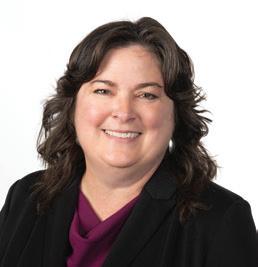

Dr. Jennifer Shewmaker





Vice President of Marketing & Communications
Kim Chaudoin
Senior Managing Editor
Janel Shoun-Smith
Writers Kim Chaudoin
Janel Shoun-Smith
Photography Kristi Jones
Design Emily Kinney
LipscombNow:Discovery
Go to lipscomb.edu/research to
Postmaster: Send changes of address to LipscombNow:Discovery
Lipscomb University
One University Park Drive Nashville, Tennessee 37204-3951
©2025 Lipscomb University. All Rights Reserved.

At Lipscomb University, we believe that research is not only a pursuit of knowledge — it is a calling to serve, to innovate and to transform lives. This edition of Discovery is a powerful testament to that belief. It showcases the remarkable work of our students and faculty who are boldly exploring new frontiers in science, technology, the humanities and beyond, all while remaining grounded in our Christ-centered mission.
As you turn the pages of this magazine, you’ll see how our commitment to academic rigor and research excellence is shaping the future of Lipscomb. From engineering students designing robotic systems that learn faster, to biology students engaging in hands-on lab research as early as their freshman year, to computing students developing real-world solutions for nonprofits — our campus is alive with discovery. These stories reflect not only the depth of our academic programs but also the heart of our community: a desire to use knowledge for good.
Our journey toward becoming a Carnegie-classified Research 2 (R2) institution is well underway. With more than $2 million in eligible research expenditures reported in 2024 and a consistent graduation rate of over 20 doctoral students annually, we are making significant strides toward our goal of $5 million in annual research activity. This milestone is not about prestige. It is about opportunity. It opens doors for our students to engage in meaningful research, for our faculty to secure competitive grants and for our university to expand its impact on the world.
Our pursuit of research excellence enhances our identity as a teaching institution. At Lipscomb, research is deeply integrated into the student
experience. Through initiatives like the J.S. Ward Society, the McClure Center for Faith and Science and the newly launched John Parker Humanities Society, we are creating pathways for students to explore their passions, deepen their learning and discover their purpose.
This issue also highlights how our faculty are leading the way in service-oriented research, addressing critical issues such as health disparities, military veteran support and open adoption dynamics. Their work exemplifies the kind of scholarship that not only advances knowledge but also uplifts communities.
As we continue to grow our research enterprise, we remain steadfast in our mission: to prepare students for lives of purpose through rigorous academics and transformative experiences. We are redefining what it means to be a research university—one where discovery is not an end in itself, but a means to serve others and glorify God.
Thank you for being part of this journey. Together, we are preparing students to be thoughtful leaders, creative problem-solvers and faithful difference makers in every field.
Best,

Dr. Candice McQueen (BS ’96) President, Lipscomb
University
R&D expenditures steadily increase as Lipscomb reaches a new Carnegie milestone.
With the April announcement of a new framework for the Carnegie Classification of Institutions of Higher Education, Lipscomb found itself still on track to achieve its stated goal to move up the ladder in terms of scientific research as well as also much closer to achieving a new Carnegie milestone along the way.
For fiscal year 2024, Lipscomb reached $2,011,000 of eligible research expenses, not far from qualifying for the newly created Carnegie research activity classification: Research Colleges and Universities (RCU), defined as institutions that award at least $2.5 million in research and development funds each year.
Reported research expenditures at Lipscomb have been steadily increasing since 2021, bringing the institution nearer to achieving its original stated goal of spending at least $5 million in research and development, thus achieving a Carnegie level that is now called Research 2: High Spending and Doctorate Production.
The Research 2 classification also requires at least 20 doctorates to be awarded each year, a threshold that Lipscomb has already met since 2012. Earlier this year, Lipscomb’s Ph.D. offering grew with a new concentration in strategic innovation and a second one in policy.

As part of the 2025 changes, Carnegie separated Research Activity Designations from what was formerly called the Basic Classification, and Lipscomb’s President Dr. Candice McQueen was one of 18 college presidents from across the nation who played a role in developing that redesigned Institutional Classification.
said McQueen. “The updates are intended to reflect the multifaceted nature of higher education in the 21st century and measure the extent to which institutions provide students access and a path to earning competitive wages.”
Carnegie now organizes institutions by multiple characteristics, including their size, the types of degrees they award and the fields of study in which students receive their degrees.
A new Student Access and Earnings Classification that focuses on student success was also added in April. The classification measures whether institutions are enrolling and creating opportunities for students in their communities and whether students earn competitive wages after they attend.
“The goal of these new classifications is to better reflect the diversity and complexity of institutions and are intended to drive more meaningful comparisons, insight and institutional improvement.,” said McQueen.
Lipscomb was classified in April as Professions-focused Undergraduate/Graduate–Doctorate Medium, placing it among 135 institutions (just 3% nationally) that offer a broad array of undergraduate and graduate degrees, including at the doctoral level; award a majority of degrees in career-aligned or pre-professional fields; and enroll between 4,000 and 20,000 students annually.
Lipscomb’s Student Access and Earnings Classification is Lower Access, Higher Earnings, placing it among 315 institutions in the group, representing 10% of all the colleges and universities in the classification.

“Our task was to support the development of a new classification system based on how institutions support students’ social and economic mobility,”












“This designation indicates that while our student body may not yet fully mirror the demographic composition of our region, Lipscomb graduates are achieving strong earnings outcomes. It also affirms the high quality of our academic programs and a clear call to action to expand access and enrollment pathways,” said McQueen.









New general education curriculum—Journey: Lipscomb Core—enhances consistent learning outcomes, shared experiences and community building.
Perhaps Lipscomb’s most allencompassing work of academic scholarship of the past three years has been the development of Journey: Lipscomb Core, a new general education curriculum intentionally designed to provide consistency in learning outcomes, a shared learning experience and a strong community within the student body.
The curriculum, debuting for all incoming students this fall, has been in the works since 2022, when the university launched the Lipscomb Impact 360 strategic plan with the No. 1 goal to provide a premier, learner-focused Christian education.
For three years, the Provost’s Office and faculty have been hard at work developing a core curriculum that not only instills the skills and knowledge most
needed in today’s world, but that does it in a way reflective of Lipscomb’s Christcentered mission.
The faculty’s journey took them from a literature review to gathering information through listening sessions and surveys for all faculty. It required the development of multiple potential curricular models and the creation of the Liberal Arts Core Council. All general education courses had to be either approved or brought into alignment with the new framework and assessed and approved by the council.
“It was a very iterative and communal process,” said Dr. Jennifer Shewmaker, who oversaw the entire process which resulted in Journey, a curriculum that takes each Lipscomb student through a 10step path to life flourishing, studded with four signpost courses: a first-year seminar
called Compass, two courses in communication and writing called POWERS and the newly developed capstone course called Virtue, Flourishing and Vocation.
Shewmaker began the process with a review of the latest research and proven best practices recommended by the American Association of Colleges and Universities (AAC&U), a global organization that works to improve quality and equity in undergraduate education.
“We asked the questions, what do we know about how students learn and how we can build this general education program to support their development in key areas,” said Shewmaker. “What are the foundational skills on which we can build career knowledge and skills?”
“As we shaped our approach to general education, we were guided by the AAC&U’s Essential Learning Outcomes, which reflect the core competencies needed for success in today’s complex world,” she said. “These include critical and creative thinking, ethical reasoning, effective communication, teamwork and problem-solving. Together, these outcomes provide a strong foundation for students to flourish intellectually, ethically and vocationally.”
Through a process of open listening sessions in 2022 and open input sessions in 2023, both
“THIS CURRICULUM GIVES STUDENTS A CONSISTENT EXPERIENCE TO DEVELOP AN UNDERSTANDING OF WHAT IT MEANS TO BE A LIPSCOMB STUDENT AND TO BEGIN TO THINK OF THEIR EXPERIENCE AS A JOURNEY...”
—JENNIFER SHEWMAKER, PROVOST
involving close to 200 participants, the provost discovered that Lipscomb’s own faculty valued these same key areas, which are both recommended by AAC&U and highly valued by employers.
According to AAC&U 2021 surveys and Forbes surveys, 95% of employers look for job candidates who can think clearly, solve problems and communicate effectively. Also, 88% of employers look for broad knowledge in the liberal arts and sciences, and 93% say these skills are more important than a candidate’s college major.
But the top job skill employers were looking for in 2024 was communication ability, and this skill rose to the top of the Lipscomb faculty’s interest as well, said Shewmaker.
“Communication was huge,” she said. “One of the key challenges we heard from the faculty was students’ communication skills.”
The other major take-away from the listening sessions with faculty was that Lipscomb’s Christian intellectual tradition should be the cornerstone for instilling the key skills in students.
At this point, the framers of Journey began to develop curricular models that would incorporate common learning experiences, as recommended by a strong body of research on high-impact practices in higher education, instill the targeted key skills and incorporate Lipscomb’s Christian

intellectual tradition. Multiple models were developed as they were presented, reviewed and revised several times by small groups of faculty and key academic stakeholders.
The final model, approved by a majority vote of all faculty, included a series of common learning experiences within the first–year seminar Compass, a revamped two-course series to teach how classical communication skills can be effectively applied in today’s digital world and a capstone course that takes everything students have learned and looks at it from the lens of ethics and practice in their chosen major.
“This curriculum gives students a consistent experience to develop an understanding of what it means to be a Lipscomb student and to begin to think of their experience as a journey, to ask what does my path look like as I build my skills, build my knowledge and move toward a vocation that God has called me to,” said Shewmaker. “This intentionality around a consistent experience and building community within the class is unique and something that’s really special.”

The first-year seminar, Compass, serves as an invitation to Lipscomb’s scholarly community, an introduction to faculty mentors and includes nine communal experiences for students, said Shewmaker.
The course has four units, with common assignments for students in each section of the course. Each unit focuses on a question: who am I, what is truth, what is a good life and who am I becoming?
Nine times throughout the semester, all sections of the course will gather for Compass Point sessions, focused on the themes of the units. At these common sessions, selected faculty will share their knowledge and experiences with students, both introducing students to potential faculty mentors and providing models of critical thinking, creative problemsolving and agile communication focused around the themes of the unit.
“This course is designed to build community within the firstyear class, to provide them with a framework to succeed as Christian scholars,” said Shewmaker. “We’ve also partnered with the Office of Student Life as they developed their first-year experience and the Center

for Vocational Development (CVD), which offers first-year programming and coordinates the freshman chapel.”
“We’re all partnering to identify the key points during the semester where we need to provide students with certain kinds of support, times when they are asking certain questions, because we know that there is a flow or rhythm to their experience as students.”
Because of the great interest in enhancing communication instruction, the development of a new course series to address this skill was launched and doubled as Lipscomb’s Quality Enhancement Project (QEP) required for its 2025 re-accreditation process by the Southern Association of Colleges and Schools Commission on Colleges.
The POWERS (Power of Words Rhetorical Sequence) courses prepare students to become confident and effective communicators across
multiple platforms. Drawing on the work of new rhetoric scholar Kenneth Burke, faculty developed two courses—Writing to Discover and Communicating to Influence—reinforcing that good communication skills should not be siloed from one situation to another.
Over the course of the concurrent classes, students develop writing and communication skills through both classical and digital approaches, are required to transform one idea across three different communication modalities and have the opportunity to participate in extracurricular events such as contests, symposiums and publications.
The idea is to build on the communication strengths the students already possess and show them how those same skills can be used to make an academic argument, to write a professional proposal or to use social media in a civically responsible way, said Dr. Brandi Kellett, chair of the English department, director of Journey and the QEP director.
“Today students think, ‘what I do on Snapchat has nothing to do with connecting with other people across lines of difference. That’s just Snapchat.’ But they will learn that Snapchat communication is actually a rhetorical act. You’re being a responsible citizen in the way you use your ideas to communicate with others, and that matters, especially in a Christian context.”
The final signpost on the Journey is the Virtue, Flourishing and Vocation course. Taken in a students’ junior or senior year and held in discipline-specific sections, the course will explore how one’s discipline or career can be rooted in and informed by Christian virtue and human flourishing with a focus on vocation and ethics.
The course content includes five weeks of bridge curriculum, common to all sections, that reviews what was learned in Lipscomb’s three required Bible courses—Story of Israel, Story of Jesus and Story of Church—and then explores virtue, vocation and flourishing, said Dr. JP Conway, assistant professor of Bible and Christian ministry, and chair of undergraduate Bible studies.
“It reminds them of the bigger application of what they learned in their Bible courses,” said Shewmaker. “It asks, ‘What does that mean in your field?’ and leads them into a conversation about ethics in their particular field.”
The rest of the course focuses on applying the six kingdom endowments developed in Amy L. Sherman’s Agents of Flourishing: Pursuing Shalom in Every Corner of Society—the good, the true, the beautiful, the just and well-ordered, the sustainable and the prosperous.
“We want students to look at their future profession and consider how they can incorporate at least two of these endowments in their chosen profession,” said Conway, “to consider what are the specifics of carrying out an endowment in their discipline.” Each discipline will choose the best endowments to explore in their section of the capstone course.
The capstone course is “a definitive spiritual bookend” to the CVD vocational programming and freshman chapel offered in a student’s first year, he said.
The Network for Vocation in Undergraduate Education (NetVUE) awarded Lipscomb University a professional development grant to develop the common bridge curriculum and to train and equip faculty teaching the final 10week section specific to academic disciplines. A multi-day seminar and working retreat was held in May to expand the vocation-related work.
The framing of general education as a journey toward a Christ-centered vocation and flourishing life is intended to boost students’ investment in their freshman and sophomore studies, said Shewmaker.
“When students enter college thinking of gen ed courses as ‘something to just get out of the way,’ it has no meaning. When things don’t have meaning, then we as people don’t tend to put much effort into them,” said Shewmaker.
“We also don’t tend to integrate that meaningless experience into the rest of our life experience. The new Journey curriculum strives to create meaningful connections for students by saying very explicitly, ‘You are on a path, and along the way you are going to learn these specific things, and those things are going to connect to what you want to do as a career and in life in this specific way.’”
Specific core texts in literature and philosophy have been chosen to use throughout general education class sections, 20 courses have been designated as diverse perspectives courses, early interaction with potential faculty mentors has been incorporated and class-wide research projects are encouraged as early as freshman year.
“This consistency provides the ability to see where our students are doing well and where they are struggling university-wide,” said Shewmaker. “We know what all their learning experiences are so we can measure them all in the same way. We have assessments built into all of these courses in order to target interventions if needed.”
For students, the last step of the journey is graduation, when Shewmaker and faculty hope students will carry the wisdom they have gained through their college experience into their vocation, integrating what they have learned into a flourishing and purposeful life.

One of the goals in developing Journey was to make it easy for students to understand and for academic advisors to explain. Therefore, the framers divided the 46-hour curriculum into four categories: Seek, Discover, Know and Flourish
Through Scripture: Three required Bible courses and one elective chosen from three options
Through Core Texts: One history, one English and one elective chosen from politics or philosophy
Scientifically: One math course, two options (for majors and non-majors) in scientific inquiry and one social inquiry course
Artistically: One course or ensemble participation for non-majors and one course, Career Creativity, for arts majors
Self: Two POWERS courses on writing and communicating
Others: One of 20 designated diverse perspectives courses scattered throughout the curriculum
Ethics, Well-being and Vocation: Compass first-year seminar and choice of disciplinespecific capstone course, Virtue, Flourishing and Vocation, or Practices for Spiritual Formation



we’ve all seen it in science fiction: robots that can talk, act and think on their own, simulating humanity in ways that appear to go far beyond their programming. In most Hollywood visions such robots exist centuries from now, but in the real world, maybe not that far into the future.
Dr. Juan Rojas, assistant professor of electrical and computer engineering in the Raymond B. Jones College of Engineering, is using a branch of artificial intelligence (AI) called reinforcement learning (RL) to teach robots how to learn from their own experiences, just as humans do, learning through trial and error.
Unlike the AI branch of supervised learning, where human programmers teach a system the correct and incorrect responses, RL drives robotic systems to explore different actions and adjust their behavior based on the results, all on their own. This experiential learning enables robots to adapt to changing environments and tasks without constant human guidance, said Rojas.
RL, however, while providing more autonomous robotic action on the back end, also takes a lot of human programming on the front end. So Rojas, along with undergraduate engineering students, is working to develop RL coding that makes robots learn faster, an outcome that could save a great deal of time, money and human labor.
Research Professor at Guangdong University of Technology in China and was recently named as an AI Fellow at VALIANT (Vanderbilt Lab for Immersive AI Translation) at his alma mater Vanderbilt.
He also serves as an associate editor for three of the top robotics research conferences held around the world and a top robotics journal, allowing him to be continually immersed in the latest work in the field, he said.
Rojas has published more than 60 peer-reviewed journals, conferences and workshops and has presented at the top robotics conferences in the world, but upon coming to Lipscomb, he took on a new challenge: creating a solid undergraduate robotics program.
He’s off to a good start. He has developed introductory classes for robotics and AI as well as an advanced robotics course that centers around research.
Students learn current research and implement their ideas through coding Lipscomb’s state-of-theart Franka Research Robot and Baxter humanoid robot, obtained through grants from the Louis R. Draughon Foundation.
Dr.
, with more than 20 years’ experience developing intelligent robots, is teaming up with undergraduate students and Lipscomb’s stateof-the-art Franka Research Robot arm, to develop methods to help robots learn faster.
“RL promises to significantly enhance the autonomy of robots, allowing them to perform complex tasks in the wild such as dynamic manufacturing, surgeries, autonomous driving or even interacting safely and intelligently with humans in everyday life,” said Rojas. “But in the industrial world, long-term RL coding can cause safety and logistics problems, becoming impractical.
“So our effort is to get robots to learn very fast from scratch.”
Rojas has been at work on this goal since his studies at Vanderbilt University in the 2000s. He went on to pursue his work at universities ranked among the top 10 in China and Hong Kong and a leading national lab in Japan. He worked as a 100 Young Talents Associate
Rojas also works with students each summer to continue development of the cutting edge system. In 2023, his students Brennan Cottrell (BS ’23) and Justice Roberts (BS ’24) presented a paper at a workshop that was part of the International Conference on Robots and Systems.
In July 2024, a team of Rojas’ students brought in a third place finish at the international 2024 RoboCup Autonomous Robot Manipulation Challenge Finals in Eindhoven, Netherlands, competing against top teams from around the world. It was Lipscomb’s first appearance at the event, which attracts more than 2,500 participants from more than 40 countries.
Seniors Cleiver Ruiz-Martinez, Gracelyn Grant and Kris Pesnell, sophomore Gabriel Everett, and now-alumni Courtney Stevens (BS ’24)and Joseph Laporte (BS ’24) developed algorithms to control robot manipulators in complex environments.


The 2024 event required robots to complete a recycling task: identify where each object was located, what type of object it was and which bin it should be placed in. The robot’s job was to make those decisions, pick up the objects and place them in the correct bin on its own, without a human operator. The team spent months using highlevel programming, testing and debugging, to teach the robot image-recognition and motion-planning to carry out the task within an unknown workspace.
Ruiz-Martinez, a junior electrical and computer engineering major from Nashville, enrolled in Rojas’ Advanced Robotics class this past spring and said he hopes other students will be inspired by seeing the Franka robot at work in the engineering center lobby.
“There is something really special about having something you can physically touch and see,” he said.
He and Faris Jugovic, a senior electrical and computer engineering major from Nashville, said they not only enjoy learning “the nitty gritty of machine learning,” but they are also excited to be part of a community of engineers working toward ambitious goals.
The students are using an open source program called SERL (Sample-Efficient Robotic Reinforcement Learning) developed through the University of California at Berkeley as a jumping off point for their own programming and are able to ask questions, watch videos of working robots and get ideas from digital online communities of AI scholars willing and excited to share.
“We can literally ask a Berkeley Ph.D. a question,” said Jugovic, noting that the skills he is learning in the class “can be used in basically every field.”
“The research is important, but the community is important to advance the work,” said Ruiz-Martinez.
This summer, Rojas is working with four undergraduate students and a high school student. Their participation is funded through the Tennessee Space Grant Consortium and the Open Research Community Accelerator.
“Research of this type is very complicated and having undergraduates become contributing authors is a really big challenge,” said Rojas, who has previously worked with up to 12 graduate students at a time. “Research at the beginning is hard to get going, but once it gets some momentum, it speeds up.
“No matter what stage of experience the students are in, I enjoy seeing the students’ initiative and seeing them surprise me with what they can achieve,” he said.
To watch a video of Lipscomb’s robot arm in action, log in to lipscomb.edu/rojas





American Chemical Society
Spring Meeting
Chemistry & Biochemistry and Pharmaceutical Sciences
San Diego, California, March 2025
Mentor: Dr. Matt Vergne
Anna Losher and Abigail Davis



National Collegiate Honors Council

Department of Biology
Kansas City, Missouri, October 2024
Mentor: Dr. Josh Owens (BS ’16)
Audrey Birdwell (BA ’25)
Lipscomb’s undergraduate students not only have the opportunity to carry out their own research, they also have the opportunity to share it at academic conferences across the country. Check out where many of our Lipscomb Bisons have been sharing their own discoveries over the past year.


National Conference on Undergraduate Research Department of Biology
Pittsburgh, Pennsylvania, April 2025
Mentor: Dr. Kyle Brawner (BS ’12)
Josh Asselin (BS ’25)

“Elucidating the Effect of Carnitine-Dependent Fat Metabolism Inhibition in Breast Cancer Cell Migration.” (Second place poster)
Maryam Gerges (BS ’25)


“Understanding the role of HD5 in Colonic Epithelial Cell Death”
Vivi Radiro
“Elucidating the Role of HD5 in Colonic Wound Healing”
Kaitlyn Sneed (BS ’25)
“Investigating the Role of Human Alpha Defensin-5 (HD5) in Impaired Wound Healing and Pathogenesis of Crohn’s Colitis: Implications for Diagnostic and Therapeutic Advancements”
“Have you taken your vitamins today? Rapid LC-MS/MS method for the quantitation of B vitamins in human plasma”
American Chemical Society Elevating
Chemistry Conference
Chemistry & Biochemistry
Denver, Colorado, August 2024
Mentor: Dr. Joseph Weinstein-Webb
Leila Ais (BS ’25), Abigail Hoermann (BS ’25), Jafer Aljorani



“Multimodal Detection of Toxic Metals in Victorian Era Book Cloth as Part of the Beaman Library Collection”
Sigma Tau Delta
Department of English and Modern Languages
Pittsburg, Pennsylvania, March 2024
Mentor: Dr. Matt Hearn (BA ’77)


“Indole Treatment of C. elegans Rescues Illness Induced by the Opportunistic Pathogen Cronobacter sakazakii”
Arlo Colvard



Association of Southeastern Biologists Department of Biology
Chattanooga, Tennessee, March 2024
Mentor: Dr. Beth Conway (LA ’98)
Mariam Iskandar and Christian Yang (BS ’25)

Miller “Mac” Chamberlain, Camille Floyd (BB ’25), Ellie Heslon, Abigail McQueen (BA ’25), Raegyn Oliver (BA ’25), Ashlynn Perr and Renae Redling
Pop Culture Association
Department of English and Modern Languages
New Orleans, Louisiana, May 2025
Miller “Mac” Chamberlain Poetry collection titled “Schematic for Besting Worry”
Pittcon Conference


“Investigating the Interplay between TLR4 Signaling and AHR Activity in Small Intestinal Epithelial Cells: Implications for Necrotizing Enterocolitis”
Gabriella Longoria
“Investigating the Potential Ability of the TLR4-NF-κB Axis to Reduce Aryl Hydrocarbon Receptor Expression in Intestinal Epithelial Cells”


Mentor: Dr. Josh Owens (BS ’16)
Audrey Birdwell (BA ’25)
“Exploring Carnitine-Dependent Mechanisms of Valerobetaine in Breast Cancer Migration Inhibition”
Jackson Head and Morgan Martin
“Characterizing Neprilysin’s Regulation of the PI3K Pathway in Triple Negative Breast Cancer” (First place poster)

Student Managed Investment Fund Consortium Conference College of Business
Chicago, Illinois, October 2024
Mentor: Dr. Han-Sheng Chen

Jacob Wolfe (BBA ’25), Noah Swiden, Kendal Matas (BBA ’25) and Braeden Burrow
Pharmaceutical Sciences and Chemistry & Biochemistry
Boston, Massachusetts, March 2025
Mentor: Dr. Matt Vergne Kennedy Brothers
“Development of an LC-MS/MS method for the quantitation of drugs of abuse with blood collection cards for drug enforcement applications” and “Have you taken your vitamins today? Rapid LC-MS/MS method for the quantitation of B vitamins in human plasma”



“A Novel Discovery Platform to Elucidate Novel Microbe-derived Metabolites and their Effects on Fatty-acid Metabolism”

Mentor: Dr. Amanda Williams (BS ’03)
Jafer Aljorani

“The Philosophy, Strategy and Performance of Student Managed Investment Fund at Lipscomb University in 2024 in the Tennessee Valley Authority Investment Challenge Program” (Second place poster)

Southeastern Council on Family Relations
Department of Psychology, Counseling, and Family Science
Orange Beach, Alabama, April 2024
Mentor: Dr. Shaun Calix
Zoie West (BS ’24)



“The Role of Human Alpha Defensin 5 (HD5) in Disrupting Desmoplakin Mediated Epithelial Wound Closure in Crohn’s Colitis”


“Relationships between adoptive and birth parents in open adoptions”







Biology department’s three-tier system of student involvement brings the benefits of conducting research to students earlier and more meaningfully in their college career.
here is perhaps no other field that draws more students interested in conducting research than biology. Yet at most institutions, undergraduate biology majors get little exposure to conducting research hands-on, delaying that valuable experience until graduate or professional school programs.
Lipscomb’s biology professors decided that was too late.
Four years ago, they enacted a new three-tier system designed to get more undergraduates into the lab conducting hands-on experiments earlier and thinking deeper about how to solve thorny questions. This past spring, more than 70 biology students were involved in conducting, assisting or learning how to conduct lab research in one way or another, outside of required lab courses.
Biology faculty have long worked to provide hands-on research experiences for undergraduate students in McFarland Science Center labs, but even just a few years ago those opportunities were still somewhat exclusive and not as comprehensive as they could be.
In 2020, then-department-chair Dr. Beth Conway (LA ’98) was searching for ways to get undergraduate students involved in hands-on research earlier, not only to benefit them in their future endeavors, but to also benefit the research projects of the department.
“I realized I was spending a lot of time training juniors and seniors in the lab, only to lose their skills in two years’ time when they graduated. They didn’t really have time to fully engage those newly learned skills in their own research,” said Conway, now professor of biology and associate chair of the department.
“It’s better for the students to start earlier,” said Dr. Brian Ellis, associate professor of biology, who
came up with an idea that the department adopted. “We value what research can teach students, but it also helps the students compete if they plan to go to medical school. Those schools know that many students are just checking the research box when they begin in their junior or senior year.”
Conway threw the challenge out to the biology faculty to figure out a way to open the lab doors to more undergraduate students, and the three-tiered system of incentives that Ellis devised has had impressive results.
• Tier One: As early as their freshman year, biology students are invited to come at specified lab times to learn basic lab skills as an extracurricular activity. These students learn from the professor and shadow upperclassmen as they carry out experiments.
• Tier Two: Once they have demonstrated their lab skills and can produce repeatable data, students move on to learn more advanced skills, either as an extracurricular activity or they have the option of enrolling for one or two hours of research credit for the work they do in the lab.
• Tier Three: Finally, those students who are particularly adept and skilled at the research techniques have the opportunity to not only conduct experiments on their own, but to also teach and demonstrate skills to the tier-one and -two students. They have the option of enrolling for three hours of research credit, which counts as an elective, and become eligible to receive a stipend to conduct additional research during the summer.
Each biology professor has the freedom to refine the tier-system to the benefit of their particular students and particular research investigation, said Ellis. He has about 10 students, up from two previously, working in his lab each year on a project


to test drugs that kill parasitic worms such as hookworm and ringworm, ailments that impact 1.5 billion people around the globe.
He requires his students to work in the lab six hours a week and all of them except freshman must present in the annual Student Scholars Symposium. The stipend for a summer research spot is the most popular incentive among his students, Ellis said.
“The system provides a structure for faculty to more formally categorize how well students are doing,” said Ellis. “For students, it helps them to try it out at first and to figure out their goals early. Most come into biology with the default goal of medical school, but involvement in research shows them that there are so many other avenues in the field.”
Students whose work excels may have the opportunity to present their work at the national conferences regularly attended by faculty.
For Conway, the number of students involved in her research has jumped from about four per year to around 25 this school year, with five students serving as tier-three lab leaders, she said.
Conway and her students are specifi cally studying triple negative breast cancers, the most aggressive breast cancer subtype with the worst prognosis and the fewest therapeutic options.
“I started saying yes to every student,” said Conway. “The first year I spent a lot of time training the group outside of class time, working on the basic techniques. There were about 15
students at that time. A few of them rose to the top very quickly and they began asking for research experiments of their own.”
The lab leaders have ownership over their own projects, said Conway. They plan the experiments and have weekly meetings with Conway throughout the process to discuss the experiment design, the data collected and questions to fuel the next experiment. The student leaders communicate with their student team themselves on the details of carrying out the experiment, and lower-tier students help make it happen. Conway’s lab leaders are spending 10 to 15 hours in the lab per week, voluntarily, and all their experiments relate to her overall research goal, she said.
The system has definitely increased the productivity, efficiency and speed of her lab research experiments, she said.
“It takes more of the professor’s time outside of class, but the payoff has been really beneficial to the pace of our research and has given many more students exposure to research,” Conway said.
That is exposure that students would not get at a high-activity research university until much later in their college careers.
“I have a lot more independence, and I am able to design and run experiments that I am interested in,” said Ellie Griner, a rising senior from Valdosta, Georgia, and one of Conway’s tier-three lab leaders.
“The research we are doing is very complex and there are always multiple routes you can take. We can take one set of data in so many directions. Dr. Conway will sit down with us and talk about her ideas and our ideas. She does a very good job of listening to our ideas and allowing us to act on those.”
Lipscomb’s focus on providing that early exposure to research was “a huge factor in deciding to come here” said Kai Lam, a rising junior from Chattanooga, Tennessee who serves as one of Conway’s lab leaders.
“The fact that freshmen can come in and do research was a big thing, and that the faculty are one-on-one and will be engaging with me for all four years. I need those relationships,” he said.
Lam began the lab tier process as a second-semester freshman. It took a lot of overcoming fear, practice and trial and error to reach the tier-three status, but it was worth it for the experience he gained, he said.
“We do a ton of research outside the lab so that we can engage in discourse with Dr. Conway,” he said. “Most of the time the experiments don’t go exactly as you plan, so you have to be very efficient and you have to adapt… The biggest thing to learn is time management and learning to delegate and trust others. That has been a real growth area for me through my research time.”


Dr. Kyle Brawner (BS ’12) is trying to determine if tryptophan metabolites can be used to treat necrotizing enterocolitis, which is a gastrointestinal inflammatory disease that affects premature infants.
Dr. Josh Owens’ (BS ’16) lab focuses on bacterially-derived metabolites that can impact metabolism to benefit cancer treatments as well as obesity treatment.
Dr. Amanda Williams (BS ’03) is exploring the role of the innate immune peptide called HD5 and its presence in the colon in Crohn’s colitis patients.
Dr. Beth Conway (LA ’98) studies the mechanism linking neprilysin with the PI3K pathway to determine whether neprilysin methylation could be a biomarker for targeted therapy of triple negative breast cancer.
Dr. Brian Ellis is working on a project to test drugs that kill parasitic worms such as hookworm and ringworm.

Biology students could not get these rare opportunities without the support of alumni and contributor financial gifts which provide needed materials, reagents, and summer stipends and housing for students. To become a partner in biology research contact Jon Lowrance, professor and chair of the department, at jon.lowrance@lipscomb.edu






WARD SUMMER FELLOWSHIPS
Parmida Fard, Lipscomb with Dr. Amanda Williams (BS ’03)
Trey Haralson, Meharry with Dr. Amos Sakwe
Jackson Head, Vanderbilt with Dr. Eric Grogan (BS ’95)
Kai Lam, Vanderbilt UCRIP*
Morgan Martin, Vanderbilt UCRIP*
Vina Nguyen, Meharry with Dr. Jermaine Davis
Riley Robertson, Vanderbilt UCRIP*
Kiomi Tanakura, Meharry SuRP**

HERMAN G. LAVELLE RESEARCH GRANTS

Ellie Griner, Lipscomb with Dr. Beth Conway (LA ’98)
Rezheen Taher, Meharry with Dr. Jermaine Davis
MITCHELL SCHOLARSHIP

Maddie Brazelton, Lipscomb with Dr. Beth Conway (LA ’98)])
LANGFORD-YATES SUMMER FELLOWSHIP
Lavin “Vivi” Radiro, Lipscomb with Dr. Amanda Williams (BS ’03)
Malak Hauter, Lipscomb with Dr. Brian Cavitt
Mario Y. Faragalla, Lipscomb with Dr. Joseph Weinstein-Webb
Elena Harvey, Lipscomb with Morghan Morris

*Vanderbilt Undergraduate Clinical Research Internship Program
**Meharry Cancer Summer Research Program




Affinity group brings alumni, supporters and students together to hand-off passion for health care to future generations.
It’s the rare undergraduate student bound for medical or other health care professional schools that gets the opportunity to work hands-on with scientific research before earning their bachelor’s degree. Even fewer have the opportunity to work on both bench research and clinical research at three different universities before graduating.
That’s the path, however, that student Carolyn Tran (BS ’25), trod during her years at Lipscomb thanks to opportunities brought her way through the J.S. Ward Society and the College of Liberal Arts & Sciences. And she’s not the only one.
Since 2016, the society has awarded various student scholarships and research fellowship opportunities, and the numbers keep growing as students each year take advantage of Ward and other summer research fellowships and opportunities both on and off campus.
In 2025, the society honored 15 undergraduate students at the annual Ward Society Dinner, awarding 11 Ward Summer Fellowships to work one-on-one with faculty at Meharry Medical School, Vanderbilt University or Lipscomb and recognizing four Langford-Yates Summer Research Fellows who will work with Lipscomb professors. New additions to the Ward fellowships this year were the Mitchell Scholarship and the Herman G. LaVelle Endowed Scholarship for Research. (see page 16 for a list of this year’s honorees).
The J. S. Ward Society is an alumni affinity group that supports Lipscomb’s health sciences programs and the university’s students to help them enter medicine, dentistry, pharmacy and many other allied health professions.
The cornerstone of the program is the support of undergraduate research fellowships.
“Undergraduate research is a transformative educational experience that offers students lasting and far-reaching benefits,” said Dr. Florah Mhlanga, executive director of the Ward Society and vice provost. “It cultivates essential skills such as problem-solving, communication, cognitive flexibility, creativity and collaboration, while deepening learning through close faculty mentorship. Students who participate in research are more likely to persist in their studies and are often stronger candidates for graduate and professional programs.”
In the past fews years, the Ward Society has also strengthened its professional mentoring with a one-on-one option called Bison Docs and a smallgroup option with pre-health students gathering in homes to share a meal and informal discussion with health care specialists. In addition, the physician-inresidence program invites professionals to campus for “office hours” with students followed by seminar presentations on health care topics.
Tran, a molecular biology major from Nashville, graduated in May having carried out research that hopefully leads to less toxic chemotherapy drugs (with Lipscomb’s Dr. Josh Owens (BS ’16), assistant professor of biology and undergraduate research coordinator for STEM); a better understanding of the causes of African sleeping sickness (with Dr. Minu Chaudhuri at Meharry Medical School); and a better way to diagnose lung cancer (with Dr. Eric Grogan (BS ’95) at Vanderbilt University Medical Center).
“I’ve been able to get a broader insight on different specialties and understand why each mentor wanted to practice in their respective fields,” said Tran. “The research experiences have helped me think more like a scientist and network with amazing professionals in the health care field.”

Grogan, associate professor of surgery and vice chair of research at the Vanderbilt University Medical Center’s Department of Thoracic Surgery, has mentored at least 10 Ward Fellows over the years in Vanderbilt-Ingram Cancer Center’s MASLAB, a biobank storing blood and tissue specimens and clinical histories that one day may fuel earlier and less invasive detection of lung cancer.
He mentored Tran at the biobank in 2024, mentored 2025 Ward Fellow Jackson Head, a rising-senior from Brentwood, Tennessee, this summer, and mentored 2023 Ward Scholar Timothy Khalil (BS ’23), who worked fulltime in Grogan’s lab as a clinical/translational research coordinator in a gap year before heading to medical school.
“Health care is the field that I love and that I want to pursue, but by doing research, I can hopefully improve some aspects of health care, both now and in the future,” said Head.
Dr. Scott Guthrie (BA ’95), a specialist in neonatal-perinatal medicine, professor at Vanderbilt, and chair of pediatrics at the Ayers Children’s Medical Center at Jackson-Madison County General Hospital in Jackson, Tennessee, took Lipscomb Ward Fellow Kaylee Wu (BS ’23), a biology graduate from Oregon who is now at Wake Forest Medical School, on a summer 2022 global research trip to India to prepare doctors for a clinical trial of a new technique to treat respiratory distress syndrome in premature infants.
He also took Wu along to make a presentation about the India clinical project to the 2023 Pediatric Academic Societies (PAS) meeting in Washington D.C., a very unusual opportunity for an undergraduate, he said.

“It’s fun to be able to influence the next generation and to see them get the opportunities and tools to succeed,” said Guthrie, a U.S. Fulbright Scholar Specialist who has traveled to Azerbaijan at the request of their government to teach neonatology and improve outcomes.
This summer, Parmida Fard, a risingjunior in molecular biology from Brentwood, Tennessee, and a 2025 Ward Fellow is working with Lipscomb’s Dr. Amanda Williams (BS ’03) on her project exploring the role of the innate immune peptide called HD5 and its presence in the colon in Crohn’s colitis patients. Fard has already been working on the project with Williams during the school year.
“Cell biology class allowed me to learn about different researchers and how their experiments shaped how we view different diseases,” said Fard. “This fellowship is a unique opportunity to engage in research on a deeper level and learn more about its clinical importance.”
Wiiliams said that summer research, in particular, gives undergraduate students a more realistic and comprehensive glimpse of life in a research or health science career.
“They get the opportunity to see what it is like to work in a lab full-time. So many undergraduate students doing research in the school year are balancing classes, jobs, shadowing and student life,” said Williams. “Through a summer research project, they are able to focus full-time on that project, which means they are able to progress much further and get a lot more done.”
Local physicians are just as involved in the Ward mentoring programs, such as Bison Docs and Physician-in-Residence, as they
are the research fellowships, said Mhlanga. Many of them have participated in the dinner conversations hosted by Dr. Raye (LA ’81, BS ’85) and Elise Mitchell in their home, providing invited students a meaningful window into the realities of life as a health care provider.
Tran’s mentor, Dr. Daniel Wakefield (BS ’12) , a partner with Tennessee Oncology and medical director for the Department of Radiation Oncology at the Sarah Cannon Cancer Center at TriStar Centennial Hospital, said he had a summer internship in college and now wants to pay that experience forward.
“I think any exposure is really worldshaping, but specifically seeing oncology patients is really intense and complicated,” he said of students’ shadowing experiences. “The experience sticks with them for a long time. I try to show the students a really humanistic way to work with people, and whether they go into health care or not, they benefit because a life of service is a life well-lived.”

As a group of alumni and health care professionals passionate about bringing the next generation into the health care field, the J.S. Ward Society is all about partnership. To become involved in the Ward Society contact florah.mhlanga@ lipscomb.edu




Science doesn’t have to be scary. That’s the message Lipscomb’s McClure Center for Faith and Science works daily to communicate to Christian students and the community.
The McClure Center was founded in 2018 to intentionally lean into Lipscomb’s Christian identity while helping students reconcile what they believe about God and what they can measure and know through scientific inquiry.
John Lewis (A ’00) was appointed the McClure Endowed Professor in Faith and Science in 2018 to coordinate its activities. In 2021, a meeting and flex space in McFarland Science Center was designated for use by the McClure Center.

Seven years into its existence, the center has brought some of the nation’s top minds in the field of faith and science to students and the community and is actively engaged in helping Christian higher education navigate this fraught intersection through research and scholarship.
Most recently, the center hosted a May workshop for local ministers thanks to a collaboration grant from Yale University awarded to Dr. Josh Owens (BS ’16), assistant professor of biology and undergraduate research coordinator.

Owens, Lewis, Dr. Mike Williams, Lipscomb professor in the College of Bible & Ministry, and Sam Wilkinson, Yale University associate professor of psychiatry, collaborated to equip ministers to engage their congregations in conversations about faith and science.
The event explored biblical interpretations alongside scientific perspectives on Scripture, and featured a talk by Wilkinson, who recently published the book Purpose: What Evolution and Human Nature Imply about the Meaning of Our Existence.
Since its establishment, the McClure center has hosted various guest speakers for students and the community including:
Ed Larson, Pulitzer Prize-winning author of Summer for the Gods, who spoke on the topic “The Scopes Trial in History and Folklore;”
April Cordero, dean of educational effectiveness and professor of biology at Point Loma Nazarene University, spoke on “Science & Faith: A Life Lived at the Crossroads;”
Sandra Richter, the Robert H. Gundry Chair of Biblical Studies at Westmont College, spoke on the topic, “Can a Christian Be an Environmentalist?;” and Dwayne Simmons, the Cornelia Marschall Smith Endowed Professor and the senior director of STEM Initiatives in the College of Arts and Sciences at Baylor University, gave a lecture titled “God on the Brain: Soul on the Mind.”
In addition to the annual lecture, the center has reached out to the community through an online course for secondary education professionals. It also hosted a workshop for about 40 church youth ministers and science educators, entitled “Navigating the Challenges of College Science.”
Lewis and Owens collaborated with professors at Belmont and Samford universities to explore through a survey the perception among GenZ students that Christianity is inherently at odds with scientific principles. A Lilly Network of Church-Related Colleges and Universities grant funded a May 2024 workshop for faculty from the three universities to develop the survey for freshmen in biology classes. The survey results are now guiding the faculty in designing curriculum modules. For Lipscomb students, the McClure Center has hosted a book club; coordinates two breakout chapel opportunities on faith and science themes, one for non-science majors and one for STEM majors; hosted an event for students to engage with science-related art as an act of reflection and worship; and sponsors faculty and student travel to faith and science conferences such as the American Scientific Affiliation in Washington D.C.
Learn more about the McClure Center at lipscomb.edu/mcclure




New focus on freshmen and creative arts highlights 14th annual celebration of student scholarship.
Whether it is an automatic latte art machine or a presentation on the creation of cat costumes, new insight into the causes of cancer or new ways to bring clean water to the disadvantaged world, Lipscomb’s annual Student Scholars Symposium (SSS) is a showcase of anything and everything that students are discovering.
The 2025 symposium in April was a milestone event with new features that focused on research by freshmen and a format intended to highlight the creative arts. The annual celebration of the creative and scholarly works of Lipscomb students was expanded to two days, with the first day including a FOCUS session with all freshman presenters and the rest of the day devoted to creative arts such as poetry, theatre, music and creative writing.
Eleven freshmen presented on topics ranging from the evolution of communication to the cellular processes involved in cancer. Next 42 students presented creative works throughout the day in Collins Alumni Auditorium.
One freshman or team was selected by faculty from each Lipscomb Experience course, a foundational course required for all freshmen to introduce them to the critical thinking and communications skills needed to succeed throughout the rest of their college career.
The inaugural freshman FOCUS presentations were:
From Oral Traditions to Digital Screens: The Evolution of Folklore in the Modern Age by Echo Padgett; In a Relationship: Can AI Take the Place of a Human Relationship? by Hannah Smith; The Impact of p53 in Cervical Cancer by Isabella English and Elijah Chism; Ramifications of HER2 Amplification in Breast Cancer by Emerald Cole and Zoe Grace Brigance; Myocardial PI3K-AKT Pathway and Cardiovascular Disease Etiology by Bryson Lovorn and Brennan Kaplan;
BCL-2 Regulation in Alzheimer’s Disease by Whitley Whitehead, Joseph Marek and Parker Shirley
On the second day, the symposium included a keynote luncheon, 22 sessions of oral presentations, two poster sessions displaying 110 posters and two special panels, one on the design aspects of the Lipscomb production of Antigone in Munich and one to highlight the artwork of students in Lipscomb’s LIFE program, where traditional students enroll in courses held onsite at the Debra K. Johnson Rehabilitation Center (DJRC) and study alongside residents of DJRC.
Both undergraduate and graduate students participate in oral presentations and poster sessions, with 362 students from eight Lipscomb colleges presenting throughout the day. An outstanding presenter from each presentation session and from each of 22 poster presentation groups is selected to be honored at an event-ending awards reception.
Students’ presentations and posters this year span a wide range of topics and disciplines including:
A theater student presentation on the visualization and creation of the costumes for Lipscomb’s fall production of the musical Cats; Chemistry students’ presentation on a methods to detect toxic chemicals in the covers of Victorian-era books and a poster on detecting toxins in costume jewelry;
An environmental biology student’s poster comparing vertical hydroponic farming to soil farming; Engineering students’ posters showing recommendations for easing traffic congestion at Nashville’s Opry Mills Mall and to regulate temperatures in the Gaylord Opryland Hotel atrium; Psychology students’ poster on how the Prosperity Gospel interacts with life stress and religious doubt; Engineering students’ poster describing how one group created an automatic machine to make art with cocoa powder on a latte and another group designed a water distribution system for a community in Guatemala; Communications students’ posters on various facets of the use of AI today and tomorrow; and
A wide range of presentations and posters regarding biological research into the proteins, cells and bacteria involved in various types of cancer, Crohn’s disease, parasitic worms, obesity and gastrointestinal diseases impacting premature infants, among others.

This year’s keynote speaker, Dr. Nicole Molumby, spoke on the theme, “Think Big! Creativity and Human Centered Research,” making the case that co-creation, or collaborative research and creation, has greater benefits for both the researchers and society.
Molumby is the graduate program director for interdisciplinary studies, as well as a professor of flute, at Boise State University, where she collaborates with the Division of Research and Economic Development to equip graduate students and faculty with the skills to co-design human-centered research. The goal of these cross-disciplinary collaborations is to enable researchers to apply their skills to tackle grand challenges.
She encouraged the gathered students to see failure as a necessary part of the co-creation process, to see curiosity as courage, to strive to learn and adapt together and to recognize the “power of the pivot” when a new out-of-the-box opportunity may arise.
“This is the future of research, not from the isolated individual in the lab, but through collaboration and communities committed to making an impact,” said Molumby, emphasizing that research done with, not for, communities is a force for real change and social and economic impact. “And you, as emerging researchers, are already part of that future.”
“THE MOST MEANINGFUL RESEARCH DOESN’T START WITH HAVING ALL THE ANSWERS, IT STARTS WITH ASKING BETTER QUESTIONS. IT BEGINS WITH CURIOSITY AND IT GROWS THROUGH CREATIVITY, COLLABORATION AND THE WILLINGNESS TO TRY, FAIL AND TRY AGAIN.”
—DR. NICOLE MOLUMBY

ORAL PRESENTATIONS:
• Investigating the Potential Ability of the TLR4-NF-κB Axis to Reduce Aryl Hydrocarbon Receptor Expression in Intestinal Epithelial Cells
Gabriella Longoria, Biology
• The “No Best World” Argument: A Strong Or Weak Objection to the Possibility of Perfect Goodness
Hudson Tucker, History, Politics and Philosophy
• Little Women Dramaturgical Research Packet
Elanah Bruce, Theatre
• Elucidating the Mechanism of Neprilysin-Regulated Triple Negative Breast Cancer Invasion
Kai Lam, Ellie Griner, Biology
• Driving Social Revolutions in 20th Century Latin America
Oliver Orellana, History, Politics and Philosophy
• English Loanwords and their Sociolinguistic Impact on the Japanese Language
Zoe Macgill, English and Modern Languages
• Painting the Past: Trauma and Identity in The Best We Could Do Ellie Heslon, English and Modern Languages
• Rethinking Music Theory Pedagogy
Kathryn Williamsen, Music
POSTER PRESENTATIONS:
• The Treatment of Polycystic Ovary Syndrome (PCOS) Using Synthetic Hormone Therapy Versus Holistic Approaches: An integrative review
Sarah Mullin, Olivia Matis, Olivia Fair, Emma Joy Dolan, Nursing
• Elucidating the Effects of HD5 on ACTC1 Expression in Crohn’s Disease
Carolyn Tran, Sohir Abdelnour, Joyce Lawson, Ellis Puscas, Biology
• What are the global differences in air quality due to the Covid-19 pandemic?
Jude Spencer, Ian McGee, Brandon SolisMartinez, Biology
• Indole improves outcomes of Cronobacter sakazakii infection in C. elegans through ahr-1 Cayden Durrough, Biology
• Xibalbay, Guatemala Water Distribution System Design
Nolen Ritzel, Lauren Baker, Robert Trey Owen, Jessamine Reckard, Joelle Noble, Sara Berry-Brown, Civil Engineering
• Using Feynman’s Technique to Evaluate Nonelementary Integrals Used in Physics
Dominick Dingus, Christopher Wengert, Madouna Barsoum, Physics
• Long term financial analysis for Opry Mills Hotel and Resort
Eli Lockert, Civil Engineering
• 6PPD-Quinone in Middle Tennessee Waters: Assessing Ecological Impact
Andrew Davis Todd, Raphael Marquise Chandler, Kerolos Gerges Basalos, Denise Lori Loewinger, Pharmaceutical Science
• The Loss of Meg3 Causes Abnormal Alveolar Epithelial Progenitor Cell Differentiation
Arlo Colvard, Gianluca DiGiovanni, Isabella Gaona, Sergey S. Gutor, Ujjal Singha, Taylor P. Sherrill, David S. Nichols, Yunli Zhou, Jonathan A. Kropski, Ward Research Fellowship
• Exploring the Effects of Indoor Plants on Executive Function
Jose Romero, Psychology
• Prosperity Gospel Orientation Interacts with Life Stress to Impact Religious Doubt and Psychological Well-being
Ellie Stork, Grace Henry, Haley Rose Wills, Joanna Jernigan, Peyton Smith, Josephine Magar, Rachel Russell, Psychology
• Effect of Sugar Alternatives in Dairy Free Coconut Milk-Based Ice Cream on Sensory Characteristics and Acceptability
Maggie Hegg, Remi Petty, Jay Edwards, Nutrition
• 3D Modeling of Brain Removal with Cranial Nerve Preservation
Lauren Blank, Sophi Cox, Jill Kirby, Mike Meredith, Charles Long, Biology
• Evaluating the Impact of Precast vs. Cast-inPlace Concrete: A Life Cycle Assessment of a Parking Garage in Nashville
Robert Owen, Civil Engineering
• AI Photography-Based Gradation Feasibility Study for Streams and Rivers in Davidson County, Tennessee
Nolen Ritzel, Lauren Baker, Jordan Wilson, Civil Engineering
• A Teacher, Medical Advisor and a Comedian Walk into a Bar: Table for one, Everything AI can do
Lorelai M. Kline, Communication
• Unveiling Hidden Hazards: A Complementary Approach to Affordable Nondestructive Heavy Metal Detection
Mario Faragalla, Gulsin Barwari, Mackenzie Brinkoeter, Eimy Lozano-Fuentes, Isabelle Riera, Chemistry and Biochemistry
• The Metabolic Effects of Carbon-Plated Shoes on D1 Runners
Bingham Hudson, Cole Kimmel, James Schmidt, Adam Macleod, Kinesiology
• Syllabus Tone and Student Self-Efficacy Natalia Calderon-Hernandez, Alan Avila, Psychology
When Dr. David Holmes came to Lipscomb in 2020 to take on the role of the dean of the College of Liberal Arts & Sciences, he came with a goal to balance the three academic areas encompassed within the college: natural science, social science and the humanities.

Seeing the success of Lipscomb’s J.S. Ward Society, an alumni and donor affinity group established in 2014 that focuses on aiding students targeting careers in the health sciences, Holmes is now hoping to build on that success by establishing an equivalent group to aid students headed for careers in the humanities.
The Dr. John Parker Humanities Society will nurture academic and spiritual growth for students in English, history and philosophy by offering resources for research, mentorship and personal development, thus creating an enriched environment for intellectual exploration, preparing students for various career paths.

Holmes, who is stepping down as dean to join the faculty this fall, serves as director of the Parker Society, with hopes of launching the society this fall and to be able to provide students monetary awards by the spring of 2026.
“The society aspires to form a vibrant community of scholars, alumni and faculty with commitment to humanities students,” said Holmes.
Just as the Ward Society pairs students with alumni practicing in the health sciences, plans for the Parker Society include engaging students with humanities professionals and alumni mentors, a group that could span far beyond academicians to businesspeople, lawyers, political operatives and civic leaders, said Holmes.
“The society will celebrate those who set the pace for us today, while also celebrating our students,” said Holmes.
The Parker Society will likely begin with awards to students for excellent academic scholarship considered worthy of honorable mention, which could include nonfiction historical research, a term paper,
essays or fictional short stories and poems, among other works, said Holmes.
Fellowships for students to conduct on-campus summer research one-on-one with Lipscomb faculty will likely also be among the first offerings, said Holmes. But eventually, he hopes to offer summer humanities research fellowships throughout the community and to host an annual Heroes of the Humanities Award Banquet, bringing alumni, faculty, supporters and students together to celebrate outstanding contributions in the humanities community.
The society’s name honors the late John Parker (BA ’68), a Lipscomb English professor from 1982 until his retirement in 2013. He taught courses on Shakespeare, British and American literature and English composition and grammar. Parker also taught Bible courses, served as faculty in Lipscomb’s study abroad programs in Vienna and London and served as advisor for The Backlog, the annual yearbook, and the student newspaper, The Babbler.


Parker penned numerous articles published in the Gospel Advocate and authored or co-authored the books: Bound and Loosed, Fundamentals of the Christian System (2003), Abide with Me: A Photographic Journey through Great British Hymns (2010) and The Gospel According to Shakespeare: 40 Inspiring Devotionals from the Bible and the Bard (2023).
“The society will significantly enhance the educational experience for humanities students at Lipscomb. By celebrating Professor Parker’s legacy, it will embody his dedication to teaching and highlight the transformative potential of the humanities,” said Holmes. “It complements the university’s mission by promoting empathy, critical thinking and effective analysis through a rigorous education.”




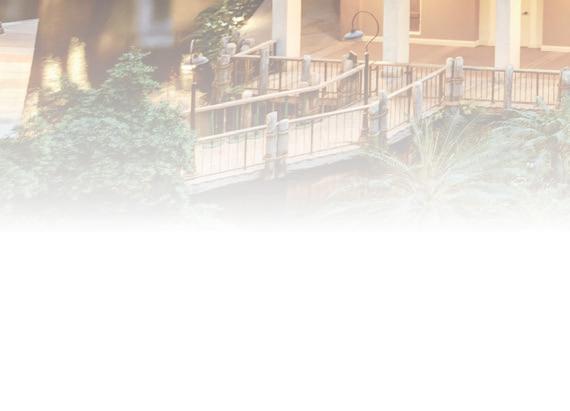




Engineering students face traffic and temperature control issues head-on to make recommendations to Nashville’s world-famous resort.
With great success, comes huge crowds of people which sometimes causes unexpected challenges that can only be solved by one group: engineers.
For the past two years, Lipscomb’s civil engineering students have partnered on a pair of projects with the engineering department at Nashville’s iconic Gaylord Opryland Resort & Convention Center to provide fresh ideas to address the tough issues that come with such success.The nationally known hotel features expansive indoor atriums that are home to a wide variety of tropical plants requiring specific conditions to thrive. One of those requirements, humidity, has posed ongoing challenges.
In addition, the popularity of the hotel, especially during Christmas when its grounds and atriums play host to various holiday attractions and décor, creates thorny traffic problems that stretch onto the surrounding roadways.
In 2024, a group of senior engineers, Alyssa Hampton (BS ’24), Tracie Santiago (BS ’24), Saly Alammuri (BS ’24), Taylor Crawford (BS ’24), Jonathan OchoaGuzman (BS ’24), Gracie Hall (BS ’24), Daniel Harvey (BS ’24) and Tamyra Kirby (BS ’24), analyzed the humidity situation as their

capstone senior project. In 2025, one senior student, Eli Lockert (BS ’25), followed up with a financial analysis of the solutions to the humidity problem, and another student Kennedy Case (BS ’25) focused on potential options to mitigate traffic congestion issues.


key step in the Opryland resort’s long-term sustainability efforts.

Finally, Case worked to identify strategies to alleviate traffic congestion in the resort area, which sees more than one million visitors during the holiday season each year.

High humidity levels and poor air circulation within The Delta Atrium, a go-to section of the hotel for visitors, have led to condensation on the glass ceilings during winter months and uncomfortable temperature differences in pockets throughout the atrium.
The students recommended removing moisture through an integrated HVAC upgrade by installing 15 desiccant wheels into the atrium’s existing rooftop air handling units and nine new 24-inch fans for improved air circulation.
They also recommended constructing two new vestibules equipped with dehumidifiers between the hotel’s Delta atrium and the adjacent Soundwaves water park.
This past spring, Lockert conducted a detailed life cycle cost analysis of the new equipment recommended.
Taking into account the initial capital purchase of the upgrades, annual maintenance costs, reductions in current maintenance and energy costs, reduction in CO2 emissions and an expected revenue boost based on higher occupancy rates, improved guest satisfaction and greater appeal for hosting events in the atrium, Lockert found that the HVAC upgrades would “make this project not only an economically sound decision but also a
Observing Opryland Drive at peak key congestion points, Case found that the vast majority of traffic is made up of personal vehicles for individuals and families, most of whom are not headed to the hotel’s registration desk. She recommended encouraging the use of ridesharing or shuttle services, implementing dynamic pricing and using digital signage that provides real-time traffic information to drivers to reduce congestion levels.
“Our partnership with Lipscomb University has been incredibly valuable for both Gaylord Opryland and the participating senior students,” said Gaylord Opryland Director of Engineering Mark Petty. “The students gain hands-on experience applying their academic knowledge in a dynamic and challenging real-world environment. In turn, we benefit from fresh, innovative solutions to our technical challenges with exposure to the latest advancements in engineering and technology. The collaboration has fostered a rewarding and energizing exchange of ideas and perspectives.”
Learn more about the engineering students’ work for Opryland at lipscomb.edu/Opryland




Each year, Lipscomb students win top awards and honors for their applied research skills in fields as diverse as finance to engineering, from radio broadcasting to pharmacy. In academic competitions in a variety of professions year round, undergraduate and graduate students are winning praise.
SCHOOL OF COMMUNICATION

• Concrete Canoe Team, first place, qualified for national competition


Intercollegiate Broadcasting System Awards
New York City


• Sam Morgan, Cari Willer, Lillian Moore, Hanna Brazeal, Brandon Bigsby and Jeikof Alfaro, inaugural nominations

Entrepreneur’s Organization-Global Student Entrepreneurship Awards Nashville

• Alex Aylor-Ibarra, Jackson Stephens, Alisa Rowell, Reece Boyd, Anthony Buckland, Joshua Brake, Bryan Beasley, Joelle Noble, Barre Seguin, James Portwood, Kasen Holt, Alexa Cady and Xavier Guerrero
2024 RoboCup Autonomous Robot Manipulation
Challenge Finals
Eindhoven, Netherlands
• Kendal Matas, first place, $3,500, qualified for national competition; Third year in a row with a Lipscomb winner

• Cleiver Ruiz-Martinez, Gracelyn Grant, Kris Pesnell, Gabriel Everett, Courtney Stevens and Joseph Laporte, third place

Society of Professional Journalists Mark of Excellence Awards
• Brandon Bigsby, winner of radio feature and television feature reporting categories
• Herd Media staff, winner of Best All-Around Television News Magazine category



Kennesaw State Marketing Invitational Kennesaw, Georgia
• Bohdan Chumakov, Natalie Blickensderfer, Ramon Nunez and Stacy Whitwell, second place

COLLEGE OF ENTERTAINMENT & THE ARTS
10th annual Josie Music Awards
Nashville
• Preston LeMacks, Song of the Year in the pop/ contemporary/dance category, winner for his song “Tell Him about Me”
Nashville Film Festival & Vanderbilt Point of VU Film Festival


• Brandon, Anastasia Boldyreva and Gracy Parnell, finalists in Best Use of Multimedia category
Southeast Journalism Conference Starkville, Mississippi
Best of the South Awards
• Joey Dwyer, first place, Best Sports Writer



National Collegiate Digital Marketing Championship Waco, Texas
• Natalie Blickensderfer, Nate Wallace, Luke B. Martin, Hanna Brazeal and Angie Toledo, sixth place

Nashville
• The Bison, second place, Best Radio Station
• Hanna Brazeal, fourth place, Best Radio Feature Reporter
On-site Competitions

• Miranda Hart and Gracie Stanley, first place, Public Relations; Second year in a row with a Lipscomb first-place finish

• Jeikof Alfaro, second place (tie), Media Law
• Micah Barkley, third place, Feature Writing
Sports Journalism Institute Phoenix, Arizona


• Alaina Morris, one of 16 students selected nationwide
COLLEGE OF BUSINESS

Student Managed Investment Fund Consortium Terre Haute, Indiana
• Henry Wolfe, Braeden Burrow, Kendal Matas and Noah Swiden, second place
Texas Christian University Neeley School of Business Values and Ventures® Competition Fort Worth, Texas

• Kendal Matas and Natalie Blickensderfer, second place, $25,000; Fourth year in a row with a Lipscomb student placing in the top ten

• Jacob Birmingham, Michael Stephens, Ezekiel Mercado, Kristen Breshears, Kayla Lopez, Avery Kroll, Mitchel Kline, Phillip Burnett, Daniel Gess, Micah Duncan, Brooklyn Gentry, John Willis and Avery Preston, winner, Audience Choice Awards for short animated film The Legend of Bill

Tribeca Festival
New York City

• Avery Kroll, Best Animated Short, nomination for her film The Piano
COLLEGE OF PHARMACY
American Pharmacists Association-Academy of Student Pharmacists


Nashville

• National Chapter of the Year, winner
• Operation Heart and Operation Reproductive Health, national winner
• Operation Immunization and Operation Diabetes, national runner-up
• Operation Substance Use Disorder, regional winner
• Pharmflix, best overall


Collegiate Entrepreneurs Organization’s Global Conference & Pitch Competition
• Emily Stephens, in the top 20, and Kendal Matas, in the top 100, out of 600 applicants; Third year in a row with a Lipscomb semifinalist


American Society of Civil Engineers
Mid-South Student Symposium
Little Rock, Arkansas
• Steel Bridge Team, third place in the construction speed category
• Kevin Mendez, Juan HenriquezHernandez, Caleb Pilafas, Van Uk, Laurence Miranda, Luke Kirby and Jorge Martinez

• Annaston Young, one of four nationally honored with the Student Leadership Award
American Society of Health-System Pharmacists
New Orleans, Louisiana
• Kevin Wu and Ashley Rector, clinical skills competition, placed in the top 10 nationally out of more than 130 schools

• Allison Duffy, one of 12 nationally to receive the Student Leadership Award





For most academic disciplines in higher education, researching and acting on the findings are part of a future leaders’ equation for success, but in fields such as business, the creative arts and engineering, knowing the “how” and “why” must be paired with the abilities to collaborate, communicate and lead a team to ensure success.
In the School of Computing, within the Raymond B. Jones College of Engineering, faculty have created a course designed to teach not only the hard skills of how to engineer software and technology, but to also teach students the soft skills of working well with clients and teams to make their digital creations a success every time.
Throughout this past year, students in the software engineering course, called Software Studio, have put their hard engineering skills to work to benefit both a local nonprofit and visitors to Lipscomb’s campus.
However, these projects have also stretched the students’ soft skills, such as teamwork, conflict management, communication and leadership skills as they partnered with clients and graduate students in the applied artificial intelligence (AI)
master’s program, who created prototypes of AI options that could be incorporated into the two projects in the future.
In 2024, Ella’s House, a nonprofit supporting pregnant and parenting student mothers in Nashville, contacted various local colleges to propose working together to create a computerized poverty simulation game, Dilemma, intended to bring home to players the challenges faced by pregnant and parenting teens.
“Our organization had long wrestled with how best to communicate the invisible barriers pregnant and parenting students experience,” said Elise Jenkins, executive director of Ella’s House. “While data and personal stories carry weight, we needed a tool that would immerse people in the experience.”
Dr. Susan Hammond, chair of computer science, thought the project sounded like the perfect challenge for the employees of Lunatic Labs, also known as students in Software Studio.
The game asks the player to make certain decisions affecting both income and
mental health, with those decisions changing the course of the game. The beta version of the game debuted at Ella’s House’s February fundraiser where students were able to gain users’ feedback for revisions.
“In many educational computing programs, it is a rare opportunity that students are able to be involved with actual deployment and obtaining user feedback,” said Hammond.
“Our team at Ella’s House developed over 25 real-life scenarios, and the students didn’t just code them—they enhanced them,” said Jenkins. “They proposed a dual-impact system that tracked both financial strain and mental health decline, providing a far more holistic and human-centered lens.”
According to student team leader Ramy Ismail, senior software engineering major from Nashville, his six-person team met with Ella’s House leaders several times throughout the year and had to figure out how to take the concepts and emotions the clients desired and turn them into actual game mechanics.
Along the way, plenty of those soft skills were developed. The students learned that it was sometimes hard to communicate





—ELISE JENKINS

Time management, meeting deadlines, being prepared for in-person meetings and focusing on the client’s expectations were all valuable skills the team practiced.
For two years, the Software Studio student team led by Justin T. Alexander, senior software engineering major from Hendersonville, Tennessee, has been working on L.U.K.E. (Lipscomb University Kiosk Experience), an interactive digital map of campus and information kiosk.
The seven-person L.U.K.E. team was challenged in finding a system where all the different functions worked together on one device. The team also received logs of how the kiosk was used this past spring and made changes based on that data, such as replacing a swipe function with arrows and buttons to help users understand how to navigate the system.
The soft-spoken Alexander admitted that the project was a great growth experience for him, teaching him he has to speak up to be a strong leader. “I think having this leadership experience helped me understand at a higher level how systems are structured,” he said. “That’s a valuable skill that an AI can’t do.”
AI could, however, provide a service to answer additional questions and provide further guidance about campus. That’s what the applied AI graduate students developed for potential use in L.U.K.E.
Hard coding answers to users’ questions into the system requires a huge human-powered development effort or a reduced set of questions and answers, or both.

To supplement the R&D work of the undergraduates, the applied AI students, who are non-computer science majors learning to use AI to enhance existing processes in their respective fields, worked to incorporate an AI chat feature that could be used in the future, allowing game users to talk to a virtual AI counselor and get help with their challenges, thus leading to better outcomes for the player in the game.
The touch-screen kiosk, which debuted in the lobby in October 2024, includes a campus map, information on engineering professors, trivia, a drawing pad, a video player, a camera to take selfies and a photo gallery.
Using prompt engineering on a frontier AI model interface, while providing the AI with all the publicly available information about Lipscomb’s campus, the students constructed an AI-based guide agent that was able to accurately answer more questions than the software engineering team could possibly account for.


While so far L.U.K.E. is only accessible in the lobby of Fields, the students worked hard to make its design something that could be easily changed out if the kiosk were moved to a new location or if more kiosks were added, said Alexander. It was designed to be just as accessible as a smart phone and easy for a newcomer to campus to figure out on their own, he said.



















Lipscomb’s Software Studio is always looking for partners to provide real-world experience for computer science students. If you are interested in becoming a partner with the Lunatic Labs, contact susan.hammond@lipscomb.edu . requested changes they had made in the game when it was still only available in coding language, said Ismail. They learned they could be more assertive in initiating improvements, as they understood the capabilities of the technology better sometimes than the clients.













Tucked inside Lipscomb University’s George Shinn College of Entertainment & the Arts (CEA), something groundbreaking is happening. Students are gaining real-world experience that goes far beyond the classroom.
Four years ago, the CEA launched an innovative educational initiative that is reshaping what it means to prepare students for careers in entertainment, storytelling and the arts. Imagine House is an immersive, professional content production house where students apprentice under nationally acclaimed faculty to create original, market-ready projects—everything from animated series and feature films to albums and concerts, with more on the horizon.
A portion of the revenue earned through Imagine House projects and initiatives comes back to the college for investment in its programs and future projects. It’s a concept that is unique in higher education.
faculty production teams in animation, music, film and design. Imagine House unites those disciplines under one vision, offering interdisciplinary collaboration that mirrors the inner-workings of the entertainment industry.
“Imagine House intentionally brings filmmakers, musicians, designers and animators into creative collaborations that sharpen their storytelling and deepen their connection to their faith,” said Steve Taylor, executive director of Imagine House. Taylor is a filmmaker, recording artist, producer and songwriter who has earned multiple Grammy, Billboard, Telly, Addy and Dove awards and nominations and is the director/co-writer of the film Blue Like Jazz
Today, Imagine House has grown into a pipeline of high-level content creation, producing work picked up by national partners like Amazon’s Wonder Project, Fox Sports and Angel Studios.
(top)
Launched in 2021, Imagine House started as a partnership with Bart Millard, lead singer of Grammy-nominated band MercyMe, and was envisioned as a place where storytelling, collaboration and faith converge.
“We asked ourselves, ‘Could this be a way we reimagine education, especially for students in entertainment who want to get out there faster?,” recalled Mike Fernandez, founding dean of the CEA. “We dreamed up a space where students could be mentored by a network of industry professionals. Over the last four years, we’ve learned a lot about what’s possible.”
Imagine House builds on the foundation of CEA Studios, launched in 2019 to house student-
“Faculty-led projects are making it to the marketplace, students are gaining real-world experience, earning professional credits such as IMDb and even getting paid for their work,” said Fernandez.
One of Imagine House’s first major film collaborations was Sun Moon, a faith-based movie directed and cowritten by Lipscomb alumna Sydney Tooley (MFA ’20), that premiered at Nashville’s Belcourt Theater in May 2023 and debuted on Pure Flix, immediately becoming the No. 1 movie streaming on the platform.
Taylor served as producer of the film. It employed more than 40 current and former Lipscomb film students, some who traveled to film on location in Taiwan and to work alongside the film’s Taiwanese cast and crew.


Another significant success story is SKETCH, a live-action feature produced in partnership with The Wonder Project. It tells the story of a recently widowed father who navigates new territory when his daughter’s scribbled drawings come to life. Starring Emmy Award-winning actor Tony Hale (Veep, Arrested Development) and D’Arcy Carden (The Good Place, Barry), the film is written and directed by Seth Worley, who has also served as an adjunct professor in Lipscomb’s Cinematic Arts program.
Students served in a range of roles including production office operations, on-set production and assistant directing, location scouting, behind-the-scenes documentation and post-production visual effects.
“What’s exciting is that these aren’t just assignments—they’re high-stakes, nationalprofile projects that help elevate the students and the university,” said Taylor, who served as the lead producer on the project.
At the film’s debut at the 2024 Toronto Film Festival, SKETCH played to sold out audiences and critical acclaim. The film is currently sitting strong at 100% fresh on Rotten Tomatoes, including reviews from

The Hollywood Reporter and Variety.
Backed by Angel Studios (creators of The Chosen), SKETCH is set for a national theatrical release in over 2,000 theaters on Aug. 6.
This spring Avery Kroll (MFA ’25) released, The Piano, a 2-D/CG animated short, after four years of work assisted by a team of professional animators and Lipscomb animation students and funded through a successful Kickstarter campaign. The Piano was nominated for Best Animated Short at the prestigious Tribeca Festival in New York City in June.
Another major Imagine House collaboration is an animated series called The Dead Sea Squirrels, created by VeggieTales co-creator and Lipscomb faculty member Mike Nawrocki (MFA ’19).
The series was picked up by The Wonder Project and now streams on Minno, where it is currently the platform’s most-watched children’s show.
Students assisted with various aspects of the production including animating the flashback sequences in multiple episodes and providing voice talent for several key roles.
Such projects have a positive impact on enrollment for the college, said Fernandez. “Students want to come to a place where their faculty are still active in the industry and where they will have an opportunity to get incredible experiences because of that.”
In the School of Music, students are managing artist relations, building marketing campaigns, planning live music events and launching full-scale record releases through several practicum courses before they even graduate.
Imagine House offers the Record Label Practicum, which is the brainchild of Brown Bannister, GRAMMY®-winning producer and director emeritus of Lipscomb’s School of Music; along with John J. Thompson, director of Lipscomb’s Music Industry Studies program who has more than 30 years experience working in the music industry, including with labels, publishers, festivals and in production and artist development;
“...GRAPHIC DESIGN, FASHION, THEATER, YOU NAME IT— IMAGINE HOUSE IS A LAUNCHPAD FOR STUDENT IDEAS.”

and Rusty Harmon, adjunct music professor, president of Vere Music and former manager of Hootie & the Blowfish.
Together, they joined forces to create a space where students don’t just study the music industry—they live it.
“This is real-world experience most students wouldn’t get until years into their careers,” said Thompson, who oversees practicum courses offered through Imagine House as well as those offered through Lipscomb’s music industry studies program, such as Red Dog Productions, a one-of-akind live music practicum experience. “We have been blessed by the investment of adjunct faculty who are actively working in the industry.”
One evening a week during the past semester, the Record Label Practicum gave students the opportunity to be on the front lines of every facet of a real record release.
Nashville Americana duo River and Rail served as Imagine House’s first record label client.
Leading up to the group’s single release in April, students were involved in everything from A&R scouting and strategic marketing to developing social media content and writing press releases. It’s an experience that mirrors the inner workings of a professional label.
The Record Label Practicum was divided into functional teams—publicity, content creation and social media— each with real deliverables.
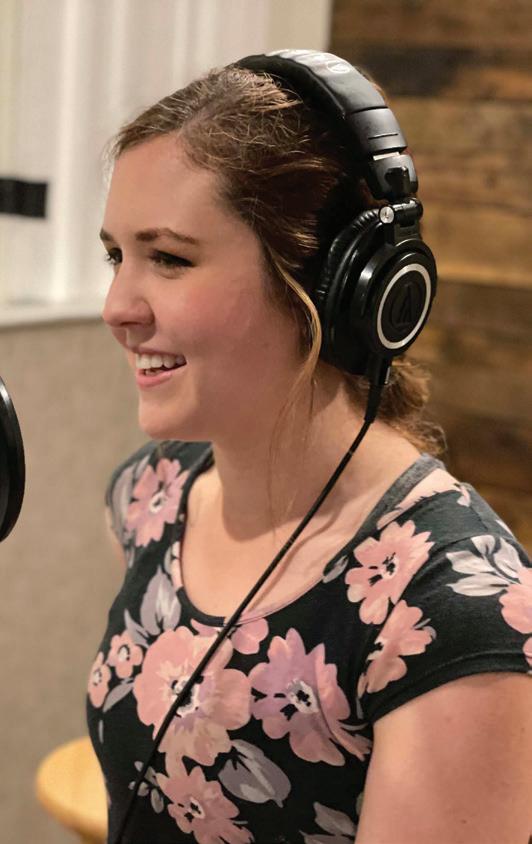
Students created media kits, conducted artist audits, wrote press materials, scheduled pre-release campaigns and coordinated a full content calendar. The release strategy aligns with professional industry practices, including playlist pitching to ADA/Warner Music and coordinating with distributors for digital rollout.
“We’re not just teaching students how to produce or perform music,” said Bannister. “We’re teaching them how to turn that passion into a sustainable career.
“For decades, I’ve worked with developing artists to take them to the next level,” he said. “This is the most meaningful project I’ve been part of in education, because it gives me the chance to take that experience and share it with 25 artists at once. It’s a chance to scale what I’ve done my whole career—and to do it with a purpose.”
“I’ve tried to get something like this started at other universities,” Harmon said, “but it takes a rare combination of student talent, institutional support and industry infrastructure to make it real. Lipscomb has all of that and the students are incredible.”
Imagine House has provided a place where students and faculty alike can try new things and be free to create.
“The challenge in higher ed is that everyone wants innovation, but there’s often little tolerance for failure,” said Fernandez. “Imagine House gives us that space. It’s where we can say, ‘It’s okay to fail here.’ Not catastrophic failure, but the kind that comes from testing small ideas. And when something doesn’t work, it doesn’t mean we stop—it means we take notes, learn from it, and wait for the next right time to try again.”
At its heart, Imagine House is about more than content—it’s about calling. The program’s Christ-centered foundation is central to its vision, even as projects engage mainstream audiences.
“We believe art should be excellent, meaningful and transformative,” said Fernandez. “This is the lab where we’re helping students live that out in the real world.”
“Our students are learning how to navigate complex creative environments with integrity,” added Taylor. “We’re giving them the tools to tell stories of faith in ways that the marketplace welcomes and that reflect who they are as believers.”
Even with these accomplishments over the last four years, Imagine House is just getting started. Plans are underway to launch Imagine House Animation, led by Tony Bancroft, former Disney animator; Imagine House Records, under Bannister; and Imagine House Design, a for-hire graphic design firm; and a fashion label, continuing the interdisciplinary vision of Imagine House.
A pitch competition for student-led projects, now in its second year, is also expanding Imagine House’s entrepreneurial scope. Recent pitch competitions have surfaced promising new student projects, including video game concepts and web series pilots.

Interested in partnering with Imagine House on real-world arts projects? Scan the code to read more and contact steve.taylor@ lipscomb.edu to become involved.






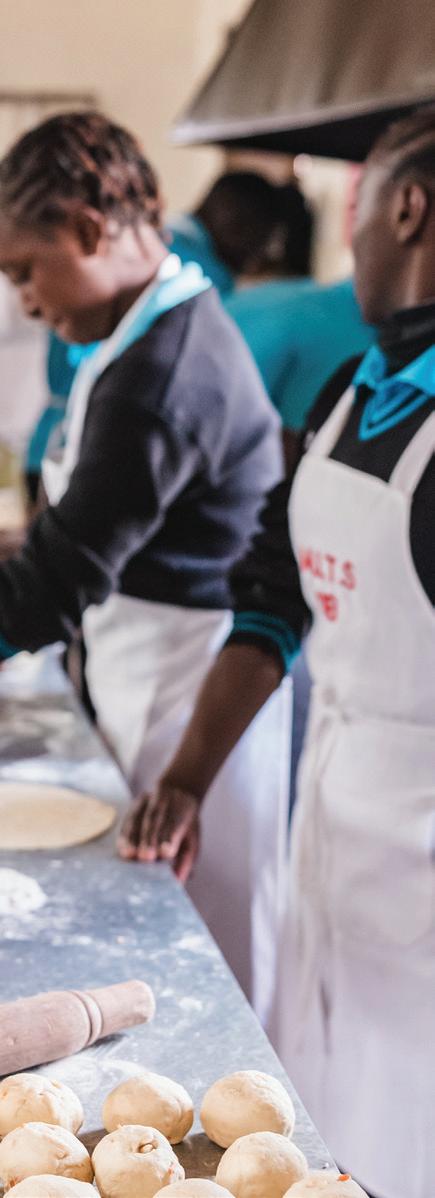
Lipscomb’s core value of serving others permeates faculty’s research and scholarship in key areas of society.
Imagine a city where once children reach adolescence they are left to fend for themselves. That is the case in Nairobi, Kenya, where it’s estimated that 60,000 children are living on the streets. Government aid for orphans and at-risk youth runs out at about age 13.
Imagine being diagnosed as a diabetic but having no insurance to cover the cost of medications to ensure a long, healthy life. Patients at Nashville’s Faith Family Medical Center don’t have to imagine, they live that scenario every day.
From adoptions to accounting, from serving military veterans with a medical crisis to supporting ministry in Africa, Lipscomb faculty are working to address these societal issues through their academic expertise.
Twenty-nine years ago, a missionary couple began the Made in the Streets (MITS) ministry in Kenya with little more than a handful of teen girls housed in a shack. Today, MITS includes a multi-site campus that serves about 120 adolescents by providing a safe and supportive environment, education and training, and opportunities to earn a living.
Dr. Walter Surdacki, professor in the College of Bible & Ministry, has been associated with the ministry since almost the very beginning.
doctoral studies focused on how to equip volunteers to maximize traditional youth group activities to make them deeper, life-changing spiritual formation experiences for adolescents.
At MITS in 2024, Surdacki drew on his careerlong experience to help the organization’s leadership team identify the core values of the ministry as it is moving into a time of change. Whereas MITS currently provides food, shelter, education and love on its own residential campus, due to a change in Kenyan laws they are now gearing up to begin also placing some youth in the homes of relatives.
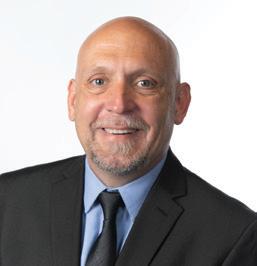
In the summer of 2024, thanks to an institutional research grant from Lipscomb, Surdacki made the latest of many trips to the MITS campus in Nairobi, this time to bring his particular academic and ministry expertise to bear on the latest evolution of the organization.
Surdacki has spent his entire career working to elevate the practice of youth ministry within today’s churches, through practice and research. His
As any organization shifts its focus, its members need to maintain the core values and ideals that have made the organization healthy and effective, said Surdacki. For example, additional regulations and required paperwork can make staff lose focus on the primary goal of the organization.
He met with MITS’ leaders for all its teams, such as security, hospitality, culinary arts or education, and led them through a process to determine how their work serves the organization’s core goals and to help the team leaders develop their own annual goals for the 2024-2025 year.



Overriding themes that emerged during the summer were a desire to keep MITS true to its Christian foundations, the life-changing power of treating all teens with dignity and respect, and the value of MITS’ identity as a family for the unhoused adolescents.
As a former in-patient medical social worker at the VA Tennessee Valley Healthcare SystemNashville VA Medical Center, Autumn Maxwell (BA ’03) LCSW, assistant professor and coordinator of field education in the social work program, definitely has a passion for working with military veterans.
So when she saw in 2023 that the Council on Social Work Education (CSWE), the accrediting body for social work programs across the country, was seeking experts to revise its Specialized Practice Curricular Guide for Military and Veteran Social Work, she jumped at the chance to provide her extensive knowledge.

The national guide lays out specialized practices to meet the CSWE’s nine competencies for social work students in regards to practicing with veteran clients who have been shaped by military culture and whose values can sometimes differ from those of the civilian public.
“There is an obligation to understand the military culture, to have a respect for the service that has been provided and to uphold the dignity and worth of the person who provided that service,” said Maxwell. “That understanding guides our professional behavior in veteran practice. It is a very unique field.”
Maxwell served on a committee that developed guidelines to meet CSWE’s competency one, demonstrating ethical and professional behavior, and competency two, advancing human rights and social, racial, economic and environmental justice.
The committee recommended that students should be taught the nuances of how federal veteran’s benefits are different from other benefit programs and the unique access issues their clients may face, such as due to

an injury. Social workers should be aware of differing boundary issues, should be able to recognize post-traumatic stress and know that for many veterans, seeking help is a challenge, said Maxwell.
The guide was published in October 2024.

When he and his wife chose open adoption to adopt their son in 2022, Dr. Shaun Calix , lead faculty for family science, noticed a distinct lack of peer-reviewed research about family relationships in the open adoptions process when he went searching for advice to help the relationship thrive.
He decided to fill the gap and has been working since summer 2024 on a qualitative study of adoptive and birth parents involved in open adoptions.
Calix conducted interviews with 15 participants, seven birth mothers and eight adoptive parents, found through social media discussion boards and networks within the community of adoptive parents.
Open adoptions began to be preferred by adoption facilitators and some adoptive families in the 1980s and 1990s, said Calix, and today most adoption agencies
encourage the open adoption format, considering it in the best interests of the child. But when he looked for information on nurturing a positive relationship with his new child’s birth parents, Calix found a lot of logistical information on how to do it, but very little information on how to keep the relationship healthy.
His qualitative study, co-authored with alumna Zoie West (BS ’24), determines specific factors that impact the relationship for either good or ill:
♦ How much information the birth parents received from the agency about the open adoption process;
♦ In the absence of agency information, did the birth parents seek out information on open adoption themselves;
♦ Awareness of the typical emotions experienced by birth and adoptive parents throughout the initial placement process;
♦ The adoptive child’s engagement in the relationship with the birth parents; and
♦ Timely response to requests for contact with the child and follow-through with those plans.
Calix intends to use this study as a foundation for continued work with larger populations of subjects and to ground future conclusions on how these factors contribute to the stability of open adoption relationships and make them more satisfying.
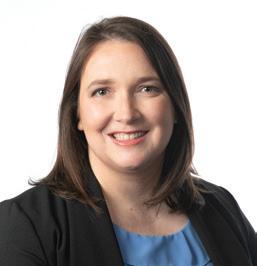
Dr. Sarah Uroza , associate professor of pharmacy practice, has been coordinating the Patient Assistance Program (PAP) at Nashville’s nonprofi t Faith Family Medical Center for around 20 years, but it wasn’t until this past year that she and pharmacy student Mikayla Morrow (PharmD ’25) decided to look into just how medically eff ective the program was.
The assistance program serves the clinic’s patients, uninsured or underinsured working Nashvillians, by helping them match needy patients with free medications offered through a network of charitable foundations operated by various pharmaceutical companies. Morrow and Uroza found that from 2020 to mid-2024, the program has saved patients more than $4 million in drug costs annually.
After a deep dive into data on the clinic’s patient population, the pair discovered that 65% of the clinic’s patients suffer from diabetes, so they decided to look at patients’ A1c levels, average blood sugar levels over a three-month period. They compared patients’ A1c on their first visit to the most recent A1c level taken in the four-year time period, hoping to see that those patients who received diabetes medications through PAP would have a lower A1c over time.
Morrow scoured medical records for 339 patients to find that the average change for the whole group was a statistically significant improvement in blood sugar levels from 8.9% to 8.4%. The best improvement, 7 percentage points, was seen for patients whose blood sugar started out below 7%.
The study documented that the PAP program is leading to healthier outcomes, and could set the groundwork for a more comprehensive clinical pharmacy presence at the clinic in the future, said Uroza. She hopes someday to have on-site pharmacists who can become more involved in advising patients on managing medications, diet and exercise.
“I learned how critical PAPs are,” Morrow said of the project. “I knew we would save
money, but I didn’t realize it would make such an impact on them both financially and also by lowering their A1c and keeping them healthy.”
In an effort to address the impact of the nationwide accountant shortage, three Lipscomb accounting and finance professors banded together to both research and disseminate valuable local information to help the local accounting industry turnaround the staffing shortage.
With a goal to provide regional information that many small firms and sole practitioners may not have access to, the professors have collaborated on six publications and presentations exploring expectations and current standards for competitive salaries, internships and benefits packages.
Dr. Susan C. Galbreath (left), Dr. Han-Sheng Chen (center) and Dr. Mark Jobe (right), have published their analyses in Tennessee CPA Journal and the Journal of Business, Industry & Economics, two journals with a large professional audience. The group also presented at the regional American Accounting Association and the Society of Business Industry & Economics conferences, and is working on further analyses to continue their goals.
Jobe, Galbreath and Chen surveyed more than 100 accounting students and more than 480 alumni throughout the region. The survey explored expectations on more than 50 factors such as work environment,



retirement plans, paid time off, insurance, perks and salaries.
Using government salary statistics, the professors showed that over the past decade, Tennessee’s accounting salaries have lost a lot of ground with almost no increase in comparison to other industries, said Galbreath.
In addition, there are more requirements to get into the accounting field today, making it a less attractive option when the salaries do not pay more than other industries without those requirements, noted Jobe.
In 2024, the professors turned their eye toward internships, which are a major tool within the industry to recruit new employees. Professors’ data shows that today’s accounting students prefer to engage in multiple internships, so they will be less likely to tie themselves down to a contract after their first internship.
Chen brought into the project a statistical model for measuring professional commitment of employees to their employer. Students with multiple internships showed more professional commitment but they also have higher salary expectations, a factor the group may look at more closely in the future.






Lipscomb funds 2025 summer research and scholarship to advance knowledge in sports nutrition, tropical ecology, positive childhood experiences, children’s books’ role in civic education and learning strategies to combat technology use.
Each year, Lipscomb University awards up to six grants to allow faculty to focus on research and scholarship during the summer.
In 2025, five faculty were awarded grants to obtain valuable certifications for their teaching and practice fields, to develop a course taking students all the way to Costa Rica and to develop two books, one on practical teaching strategies and one shining a spotlight on how children’s books influence our civic behavior and values.

Dr. Zachary Droll
Assistant Professor in Kinesiology
Completion of Certified Sports Nutritionist Credential
Droll is spending the summer studying for the Certified Sports Nutritionist credential from the International Society of Sports Nutrition in order to advance his research-based knowledge to teach master’s and graduate-level students who generally pursue the credential upon graduation to meet sports nutrition industry standards.
“This credential is highly regarded in the field, and will further enhance my ability to educate students, athletes and clients on evidencebased nutritional strategies to optimize performance and recovery,” said Droll. “Ultimately, this certification will allow me to provide deeper insights into the critical role of nutrition in athletic performance.”
Droll’s research interests are in understanding how training volume affects golfers and other athletes who have year-round competition schedules and can’t rely as much on traditional periodization, as well as how sport supplementation affects golf performance. He completed his doctoral dissertation on training to increase club head speed and how accumulated fatigue affects putting skill in golf.


Dr. John Lewis (A ’00)
Professor in Biology and McClure Endowed Professor in Faith and Science
Development of Tropical Ecology Course in Costa Rica
Lewis is visiting Costa Rica this summer to develop a three-week tropical ecology travel course for undergraduate students.
“The course will highlight the rich biodiversity and numerous ecotypes found in Costa Rica, one of the most ecologically diverse countries in the world,” said Lewis.
The class itself will be offered in summer 2026 as part of a new environmental biology concentration, and will count as either a biology elective or a general education science credit with a lab.
“Students will have the opportunity to explore tropical rainforests, cloud forests, mangrove swamps and coastal ecosystems to learn about the unique flora and fauna of each habitat,” said Lewis. “The course will provide hands-on, field-based learning experience in one of the most biodiverse regions of the world.”
Students will observe and identify a variety of plant and animal species; learn about ecosystem dynamics, threats to biodiversity, and conservation efforts; participate in hands-on field research and data collection and meet with local scientists, conservationists and community leaders, said Lewis.
Lewis has a Ph.D. in wildlife science and more than 15 years of experience teaching undergraduate biology courses, including several field-based courses. He has previously led student trips to west Texas and Italy and bi-annually takes ecology students on a camping trip to the Great Smoky Mountains National Park to learn about ecotypes and biodiversity.
Lewis has worked as a wildlife biologist, research assistant, and environmental technician, gaining valuable practical experience in methods such as helicopter surveys, backpack electrofishing and small mammal trapping.

Autumn Maxwell (BA ’03)
Assistant Professor and Coordinator of Field Education in Social Work
Completion of Healthy Outcomes from Positive Experiences Certification
Maxwell is using this grant to become a certified HOPE Facilitator through the HOPE (Healthy Outcomes from Positive Experiences) National Resource Center at Tufts University in Boston, Massachusetts, allowing her to conduct HOPE training and workshops on campus and for the community.
There is growing research from the HOPE National Resource Center regarding the impact of positive childhood experience on all children, in all communities. This work began as a way to identify mitigating and protective factors of adverse childhood experiences, a concept developed in research in the 1990s.
“I believe the Four Building Blocks of the HOPE framework (relationships, environment, engagement and emotional growth) connect well to the Lipscomb concept of flourishing, building on individual and community strengths and increasing support for improved well-being and resilience,” said Maxwell.
Knowledge of the HOPE framework will not only benefit social work students, but it can also be beneficial to the entire Lipscomb community and creates opportunities to impact the greater Nashville community by educating and supporting individuals, families, groups, organizations and beyond.
“As the coordinator of field education for the social work department, I am uniquely positioned to reach community partners to leverage this training for the visibility of Lipscomb and the department,” said Maxwell, a licensed clinical social worker with both psychiatric and medical field experience.

Dr. Emily Mofield
Associate Professor in Education
“Beyond the Screen: Tools for Deep Thinking and Meaningful Inquiry in a Digital World”
This grant funds Mofield’s completion of her next book, Beyond the Screen, to be published through Routledge Press. She is using the summer to write the manuscript and collect data on perspectives of educators related to students’ technology use, attention and deep thinking.
“Research studies have linked the constant use of digital devices among students to fragmented focus, conditioning for instant gratification and a growing tendency toward surface-level skimming rather than deep learning,” said Mofield. “K-12 educators have shared in studies that digital technologies are creating an easily distracted generation with reduced cognitive stamina.”
Mofield’s book will explore how constant digital connectivity affects student learning and will provide practical strategies for educators to address these challenges and foster deep engagement in learning.
The book will draw from Mofield’s expertise in gifted education, but will be written to help educators support a broad range of students with a framework and actionable tools that can be adapted to various educational contexts.
“By examining cognitive depth through the lens of digital distraction, I aim to provide a broad audience of educators with a fresh perspective on how technology influences students’ ability to engage deeply with content,” she said.
In addition to teaching in Lipscomb’s education doctorate program and serving in roles with the National Association for Gifted Children (NAGC), Mofield has authored or co-authored 13 books in the field of gifted education.
See more on Mofield’s latest book on page 41.

Dr. Marc Schwerdt (BA ’93)
Associate Professor and Chair of History, Politics and Philosophy
“Children’s Literature and Civic Education” Schwerdt is spending this summer completing a nuanced exploration of the civic content embedded within children’s literature, in order to complete the manuscript of his book Children’s Literature and Civic Education this fall.
Currently under contract, the book will dissect how children’s literature subtly but significantly contributes to civic education, even in the absence of overt political agendas, said Schwerdt. By analyzing dozens of bestsellers and more than 60 Newbery Award winners from 1960 to 2023, this study will shed light on the pervasive civic themes and narratives woven into stories consumed by young readers.
“At the heart of this study is the development and application of a content instrument I designed in my doctoral research to measure the presence of civic and political concepts in children’s literature,” said Schwerdt, who developed this book from his dissertation work completed and published in 2004 and 2005. “This instrument is crucial because it provides a structured and systematic way to quantify and categorize the civic content within the selected sample. The study’s findings reveal that while explicit political messages are rare, the stories are rich with civic content that aligns with recognized civic education standards.”
The book will include chapters based on specific genres such as adventure stories, folklore, historical fiction and science fiction/fantasy.
See more on Schwerdt’s book on page 38.












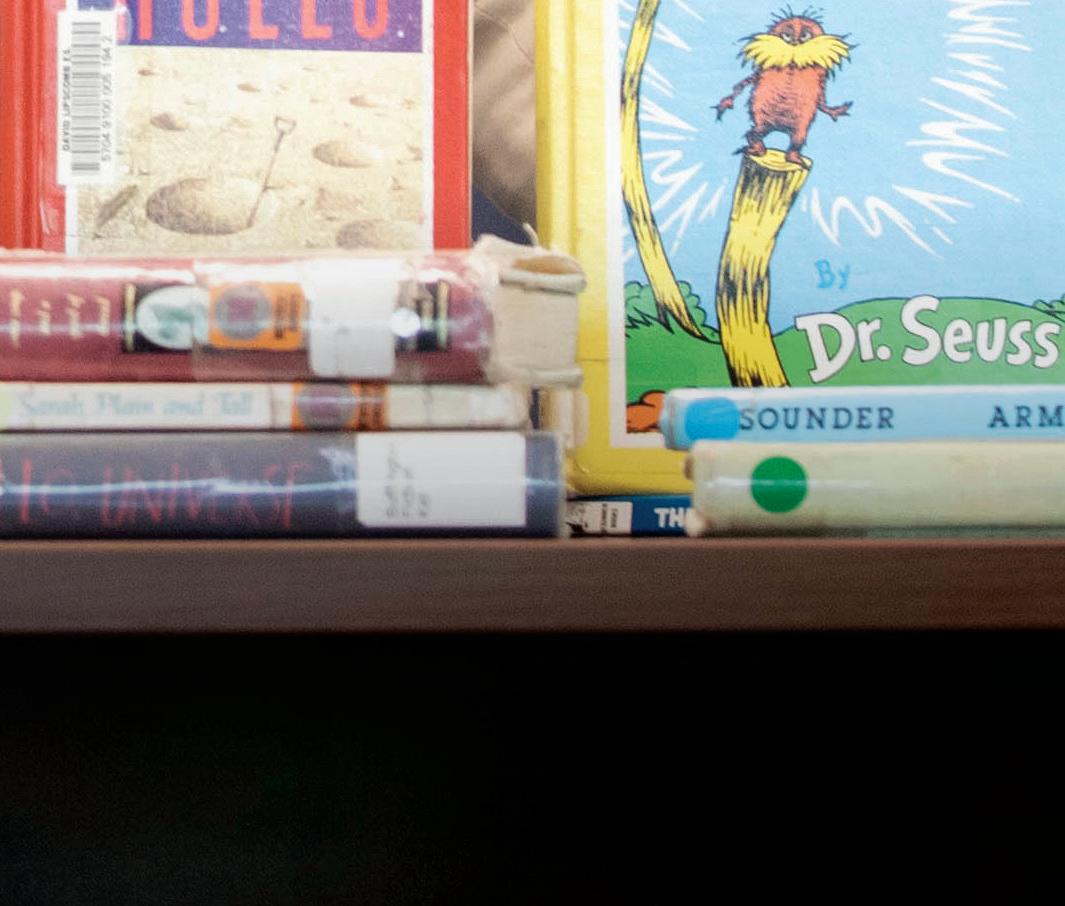
In 2024-2025 faculty explored civic messaging in children’s books, evangelism, creativity, political polarization, ancient Egypt and more through the written word.




With new books hitting digital bookshelves in 2024 and 2025, and more slated for 2026, Lipscomb’s faculty are adding their voice to important conversations in today’s society. Through academic scholarship and the act of writing, Lipscomb faculty work to expand horizons, broaden perspectives and, as Plato argued, “give life to everything.” Read on to learn more about books penned by faculty available for purchase in 2025-2026.



Dr. Marc Schwerdt (BA ’93)
Associate Professor and Chair of History, Politics and Philosophy; Under Contract with Lexington Press You would be hard pressed to find a child who didn’t grow up loving to read Dr. Seuss books, but Schwerdt (pictured at left) was inspired by Dr. Seuss in a different way, much later in life.
During his graduate school years in political science, a professor introduced Schwerdt to the concepts of public service portrayed in Dr. Seuss books (think Horton Hears a Who!). Then later a fellow graduate student’s librarian mother pointed out the exact opposite, that actually Dr. Seuss was pretty subversive in regards to the established order (think Cat in the Hat).
After having these conflicting conversations, Schwerdt became interested in looking at other children’s books to see what civic education messages they may also be sending. The idea ended up becoming his dissertation and the focus of his first two peerreviewed published articles.
Twenty years later, Schwerdt thought the time was right to expand his doctoral research into a general survey of the portrayal of Democracy and its aspects and components within children’s literature. His survey includes both selected best-sellers and the Newbery Award winner in each year from 1960 to 2023.
Schwerdt has developed a content instrument to measure 13 aspects of Democracy, to show the presence or not of civic and political concepts in his chosen children’s literature, which includes everything from Harry Potter to Beatrix Potter, from Judy Bloom to Berenstain Bears.
Schwerdt’s review doesn’t really make a comment on the outcome of the plot of the book, or the moral rightness or wrongness of characters’ actions, instead it analyzes characters’ behavior and other characters’ reactions using the content instrument, that measures aspects such as civic disposition (independence), civic
disposition (respect of individual worth), justice and fairness, and political rights.
For example, according to Schwerdt’s content instrument, if characters are able to speak openly without suffering negative consequences such as punishment or being ostracized, that shows the presence of political rights, defined as “the power of participation and control of government embodied in certain political rights, such as freedom of speech and the press.” If characters hesitate or avoid speaking openly because they fear the consequences, this shows opposition or a lack of support for political rights. Both are harmful to our public square, said Schwerdt.
In another example, respect of individual worth is considered one character trait important to the “preservation and improvement of American constitutional democracy.” Therefore, consideration shown for the feelings or circumstances of characters portrayed as evil, in the wrong or disrespectful would indicate a respect for individual worth and human dignity. If no effort is made to understand why a character is evil, acts disrespectful or in the wrong, that indicates a lack of respect for individual worth and human dignity.
Schwerdt’s updated analysis, to be completed this summer thanks to an institutional grant from Lipscomb (see page 37), has found that while explicit political messages are rare in children’s literature, the stories are rich with civic content that aligns with recognized civic education standards, he said.
“For most of the books, you have to dig to get any kind of political content out of it, but there is a lot of civic content as opposed to partisan content,” he said.
“I would like people to understand that politics is not really separate from mainstream life, and it is not really about partisanship. It is about citizenship, and being a good citizen is something we have really neglected. I would like to bring that back into the education system and into the minds of everyday people,” said Schwerdt.
Dr. Scott Bledsoe (LA ’10, BA ’14)
Assistant Professor in the School of Public Policy Under Contract with Bloomsbery Academic Academics like to say, “Your research interest is a reflection of your own environment and life context.”
Bledsoe, who grew up at and graduated from Lipscomb, says that is certainly true in his case.
Through his upbringing in Nashville and the church, the son of Lipscomb’s former provost, he definitely understood and valued the sense of community brought to people through religion, especially evangelical religion. However, once moving to New York City for his master’s in comparative politics and then to Washington D.C. for his doctorate in political science, Bledsoe was exposed to a wealth of new attitudes, many from people who had little to no experience with organized religion.
That personal experience, combined with the societal polarization he watched in realtime among his friends and colleagues while earning his Ph.D. in 2022, served as the fuel for his forthcoming book, To Love Thy Neighbor: Belonging, Belief and Affective Polarization in the U.S., an expansion of his dissertation exploring how belonging to religious and social communities affects how people feel about “the other side,” meaning those with contradictory political views.
During his doctoral studies, Bledsoe received a grant through George Mason University to conduct a nationally representative online survey in the summer of 2021. He received 1,260 responses to all sorts of questions about people’s religious beliefs and behaviors, as well as their political beliefs, attitudes and opinions.


What he found was that “we are really not that far apart on the issues but we are very far apart on how we feel about one another,” he said.
According to the data, the two groups that drove most of the polarization—white evangelicals and the religiously unaffiliated—were at opposite ends of the spectrum with the most intensely affected views.

Bledsoe went on to explore how the social communities of these two groups may affect their intense views about each other.
“White evangelicals appear to have a much higher level of investment in their own religious communities that many other religious denominations do not have,” said Bledsoe. “So it seems intuitive that if you spend more time with people who believe like you, that will exacerbate polarization because you are not coming in contact with new ideas.
“But the interesting thing is that the religiously unaffiliated don’t appear to have community in the same way that evangelicals do,” he said. “So how can we better understand what the religiously unaffiliated believe? Is there a unifying world view among secularists that we should look into further?”
Bledsoe posits that perhaps for the unaffiliated, political identity has taken on a religious connotation for them, providing that community factor that affects polarization.
He also notes that even the word “evangelical” adds to the confusion, as the definition that the general public may have in their minds today is not what an “evangelical” is historically or socially, he said.
John Thompson (Visiting Professor of Music Industry Studies); Gyroscope Productions (2024)
Lipscomb’s Thompson, a long-time veteran of the music industry, has made his first venture into fiction writing with the release of his third book, but first novel, this past December.
Ballad tells the story of an unlikely group of musicians who are brought together through the power of music when something miraculous happens. Set against the backdrop of Nashville’s rapidly changing and explosively creative neighborhood of East Nashville, and seen through the eyes of people who

“I’m not sure the general public has a good understanding of evangelicals,” he said “There are so many variations of worship and beliefs within that evangelical category. The general public needs a better understanding of what evangelical means.
“Both the word evangelical and the religiously unaffiliated have become sorts of social markers,” said Bledsoe. “They communicate what group they belong to and what group they don’t (maybe more importantly). So in that way, political identity has fused with religious identity in strange ways.”

have experienced true devastation, this unintended troupe brings a community together across cultural, generational and ethnic divides. Thompson is the founder of True Tunes, which has over the years produced a print magazine, podcast and blog, and a contributor to magazines such as CCM and Christianity Today. He penned his first book, Raised By Wolves: The Story of Christian Rock and Roll, in 2000 and his second book, Jesus, Bread and Chocolate: Crafting A Handmade Faith in a Mass Market World, in 2015.


Dr. Emily Mofield
Associate Professor in Education
Under Contract with Routledge Press
Few could deny that children’s extensive use of digital devices is having society-changing impacts on future generations. Educators are on the front lines of shaping what that impact will be.
Mofield, who has written or co-written 13 books on gifted education and instructional coaching, is taking that challenge head on in her next book, Beyond the Screen: Tools for Deep Thinking and Meaningful Inquiry in a Digital World, exploring how constant digital connectivity and overuse of screens affect student learning.
This book will equip educators of grades 4-12 with practical strategies to manage these challenges, improve focus and foster deep engagement in learning, guiding students toward meaningful inquiry and sustained curiosity, said Mofield.
Mofield was motivated to write the book after reading the best-selling book The Anxious Generation by Jonathan Haidt, where he posits that an increase in screen time, particularly on social media, and a decrease of play-based activities have affected students’ mental health. She was inspired to begin her own research into how technology use is also affecting students’ ability to stay engaged in deep learning.
Currently, Mofield is conducting interviews with K-12 teachers on their perceptions of how screens have affected students’ cognitive stamina as they engage in problem solving and complex tasks, and a Lipscomb institutional research grant will allow her to complete the manuscript this summer (see page 37) .

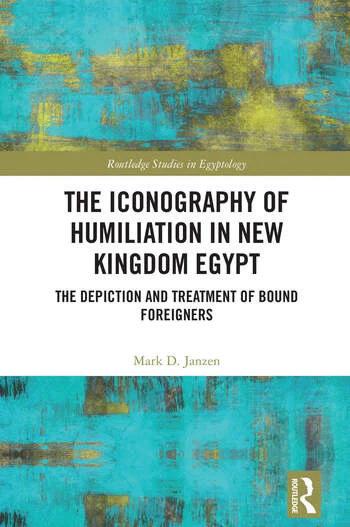
“Because we are living in a digital-first world, teachers need strategies that ensure students drive their own thinking,” said Mofield. “This book provides a roadmap to cultivate depth, curiosity and cognitive stamina with a balanced use of technology.”
Mofield, who has been researching and developing methods of gifted education since 2011, is intentionally not focusing this book on gifted education, instead writing it to be valuable in a variety of educational contexts.

To make the book a useful guide for all teachers, she is arranging the content into an easy-to-digest framework with its own acronym: DEEP (Designing Cognitive Rigor, Engaging Inquiry and Creativity, Executive Function Development and Purposeful Integration of Technology) and providing actionable tools for educators to foster engagement and problem-solving skills.
The book will focus on combating the impact of constant screen use, such as fragmented focus, conditioning for instant gratification and a growing tendency toward surface-level skimming, by addressing how to build cognitive stamina through scaffolded complex tasks and how to develop students’ executive functions such as time management and metacognition.
The work will highlight the need to balance high-tech with low-tech learning experiences and provide strategies for shifting students’ technology use from passive consumption to active creation in learning, such as digital storytelling, use of simulations and virtual mind-mapping.
Dr. Mark Janzen (Associate Professor of Archaeology and Ancient History); Routledge (2024)
Depictions of foreign captives in humiliating or torturous poses are ubiquitous in Egyptian iconography and reflect the celebratory nature of royal ideology, in this case by degrading enemies. Egyptologists have scrutinized these scenes for details regarding various military matters, but existing scholarly literature offers few studies focused on enemy captives and the sheer physical brutality of the depictions of their bindings.

As the co-director of Lipscomb’s gifted and advanced academics graduate program. Mofield said her current focus on deep learning and rigor will positively impact her graduate students, as she will introduce new resources into her Curriculum Planning and Instruction for Gifted Learners courses.
The Beyond the Screen content will “enhance the skill-set of teachers of all ability levels by providing practical ways to teach for deep learning and to prepare them to collaborate and coach other educators to apply these methods,” said Mofield.

Janzen examines the bound foreigner motif in New Kingdom Egyptian sources, demonstrating that these prisoners of war played vital roles in Egyptian ideology and religion. Their depictions in bizarre or torturous poses served to reinforce ideological underpinnings of the pharaoh’s right to rule, perpetually ritualizing their defeat and/or punishment through the presence of this iconography on ceremonial objects used primarily by the king and on temple walls and monuments.

The volume also explores cross-cultural and anthropological parallels, placing Egyptian treatment of foreign prisoners in its ancient context.

Dr. Aaron Howard
Assistant Professor of Ethics and Reconciliation
With degrees in religion, ethics and society; counselor education; and anthropology, it’s easy to see that Howard is not a man limited by categories. Even at Lipscomb he crosses boundaries with an appointment in both the College of Bible & Ministry and the George Shinn College of Entertainment & the Arts.
So when it comes to his first book, with the working title Incommensurable Paradigms: The Competing Claims of Black Pietism and Black Liberationism, he’s looking to break down silos there as well. Howard is working to become one of the few Black theologian authors of a booklength critique of Black liberation theology and womanism, the current norm in the Academy of Black scholarship, according to Howard.
By using primary sources to identify the central theological beliefs of Black Christianity



in America from its inception in slave religion to its development in Black church institutions during the eighteenth through twentieth centuries, Howard’s book will contrast those beliefs with the current philosophy of Black theology/womanism to demonstrate incongruence between these two traditions. His writing argues that these traditions cannot be harmonized and should remain conceptually and institutionally distinct.

Like many other Lipscomb faculty, Howard is grounding his manuscript in the research he did as a doctoral student in religion, ethics and society at Vanderbilt University, but today he said he is in a more ecumenical mindset, hoping his work can promote unity among churches, whether predominantly white or Black.
He finished his manuscript in the summer of 2024, thanks in part to an institutional grant from Lipscomb.

Carnivale Interviews: Testimonies of the Supernatural
Carlos Hooper (Associate Professor and Director of Graphic Arts); jchooper (2024)
Hooper’s work is a collection of testimonies of the supernatural, narrated by fictitious circus performers who overcome challenges through faith and hope. This book was sparked through a series of artistic posters Hooper created some years ago, each poster depicting an individual circus attraction.
In the book, the creative and art direction for each poster depicts styles used during the 1920s.


Faithful Defiance: Marshall Keeble’s Life and Legacy
Dr. C. Leonard Allen (Dean of the College of Bible & Ministry) Abilene Christian University Press (2025)
Theologian Allen’s new book depicts the remarkable and impactful life of Marshall Keeble, considered one of the premier evangelists in the Churches of Christ in the 20th century, viewing it from the perspective of the years since his death in 1968.
Keeble spent 55 years as a full-time evangelist. His remarkable gifts, steadfastness, toughness and tactical navigation of the Black/White divide enabled him to baptize as many as 40,000 people, to plant more than 300 congregations and to raise up and mentor powerful sons and grandsons in the faith, said Allen.
Each fictional character is associated with a true testimony of faith which shaped them as a person. These characters and their stories are presented as a collection of narratives.
“As a graphic designer, I have worked in various roles and industries for over 30 years, and recently shifted to teaching full time, where I have been given the opportunity to educate, encourage and inspire the next generation of artists,” said Hooper. “As a Christian, I incorporate faith into art during the creative process.”


According to Allen, Keeble died the same month as Martin Luther King Jr., and this timing stirred controversy in Churches of Christ over race and the civil rights movement, exposing the tensions between those who defended Keeble’s silence on race and the growing number of those insisting that Christians must speak out and take action.


Allen is the author of numerous books, most recently Poured Out: The Spirit of God Empowering the Mission of God (2018), In the Great Stream: Imagining Churches of Christ in the Christian Tradition (2021) and The Bookroom: Remembrance and Forgiveness—A Memoir (2024).

In 2024, Lipscomb’s Center for Teaching and Learning (CTL) launched its new Scholarship of Teaching & Learning (SoTL) Grant program, funded by individual donations through Lipscomb’s annual Day of Giving in February.
CTL’s mission is to promote and sustain excellence in teaching using creative, collaborative and innovative techniques. The center cultivates collaborative partnerships, provides professional learning and integrates into faculty teaching innovative resources that support highimpact learning for all students.
SoTL grants encourage faculty to deeply engage with the learning process by clearly identifying the key skills and knowledge students need to achieve and then evaluating how effectively their teaching methods are helping students reach those goals.
Six faculty were awarded the inaugural SoTL grants in 2024.
Dr. Scott Bledsoe (LA ’10, BA ’14), Assistant Professor, College of Leadership & Public Service
Kimberly McCall, Director, Fred D. Gray Institute for Law, Justice & Society
This project, to be carried out in 2026, will attempt to quantify the pedagogical value of travel courses by measuring the positive impact on students in a non-travel course compared to students in the same course provided in a travel format.
Two travel courses offered in the Fred D. Gray Institute for Law, Justice & Society take students to Washington D.C. and to Europe. McCall and Bledsoe will explore how to evaluate the learning outcomes and how to define the most effective methods employed through travel courses.
Dr. Beth Conway (LA ’98), Professor and Associate Chair, Biology
This study explores whether writing and delivering a five-week series on metacognition and study skills tailored specifically for first-year biology majors would improve their exam performance in their first year biology courses and improve study habits.
Five modules developed from Saundra McGuire’s book, Teach Yourself How to Learn, were incorporated into the biology first-year seminar course. Conway then compared student performance on the first exam before implementing the modules to subsequent exam scores throughout the end of the semester.

Preliminary analysis of the data suggests that in one of the course sections, students showed significant improvement in exam performance and study strategies after completing the module.
This study is important to enhance the study skills of high school students who graduated during the pandemic’s remote instruction, said Conway.
Online Learning in Entertainment, Design & Creative Enterprises
Melissa Forte, Assistant Dean of Graduate Studies, George Shinn College of Entertainment & the Arts
This project explores how AI could be used by instructors and directors in the entertainment and arts areas of online learning. Forte attended the Consortium for Online Learning Conference 2024 to glean knowledge from those that have been teaching online for years and are now embracing AI.
“I’ve tested many ideas that I became aware of during the conference and have continued to experiment with the new advancements since then,” said Forte. “Quality education with AI is, and will continue to be, a changing and challenging mastery of skills that touches every area of education.”
Student-Generated Final Examination as Active Learning Pedagogy within a Pharmacy Elective
Dr. Robert Tunney, Associate Professor, Pharmacy & Pharmaceutical Sciences
Dr. Sarah Collier, Associate Professor, Pharmaceutical Science
This study is assessing third-year student pharmacists’ attitudes, perceptions and confidence with active learning pedagogy involving a student-generated, written final examination in a cardiology elective.
We are utilizing a 12-question online survey using anchored rating scales administered to both those enrolled within the elective and peer control students who are not in the cardiology course. Data is to be collected over multiple years.


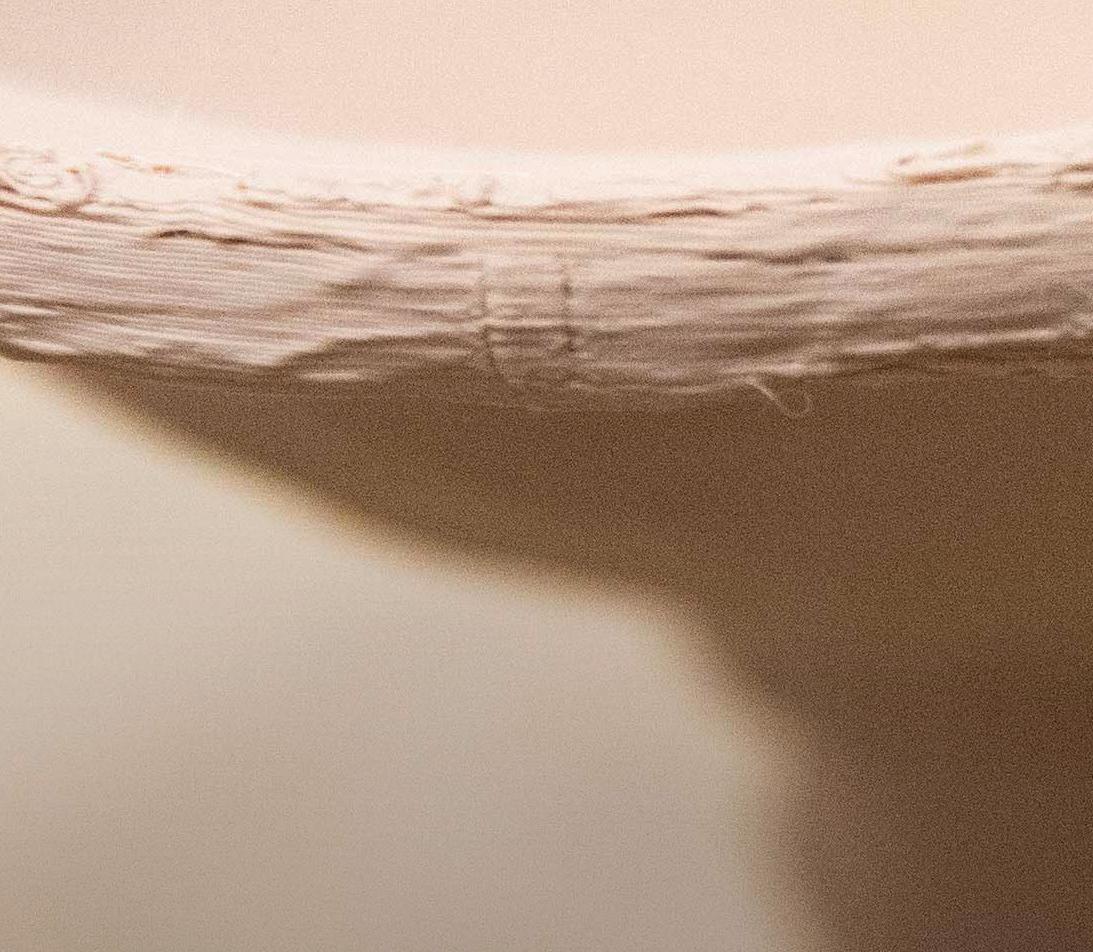



Doctoral student Terry Nichols has always lived at the intersection of the head and the heart.
As a minister enrolled in seminary, he also worked in information technology. Then after discovering archeology, he continued to work in IT even while he studied archeology and worked on digs in Virginia, the Karnak Temple in Egypt, and Tel Gezer, Tel Burna and Khirbet ’Ether in Israel.


In the past school year, however, he merged the two to begin an extra-curricular project in digital archaeology for the Lanier Center for Archaeology to create 3-D printed copies of pottery discovered in the Israel Tel Gezer Excavation Site.
Nichols, now a user services specialist in Lipscomb’s IT department, is also working on his Ph.D. in archaeology of the ancient Near East at Lanier and has teamed up with Sam Wright (BA ’06, BS ’11), assistant professor in the Raymond B. Jones College of Engineering, to create the copies of artifacts, eventually allowing Lipscomb’s students to see and hold inperson copies of artifacts that are most often required to remain in the nation where they were discovered.
The pair are still in the “proof of concept phase,” said Nichols, and have created two pieces so far—a chalice and a jar base—but the hope is to reproduce up to 25 artifacts to allow students, who normally have to use photos and descriptions to learn how to identify the artifacts, to be able to see, touch and hold a replication that looks almost exactly like the original.
The team started with pottery. Nichols and Dr. Steve Ortiz, director of the Lanier Center, selected for printing the 25 Tel Gezer artifacts from the hundreds available that would be the best for educational use on campus. The initial goal is to print the five most important pieces.


The prototype piece was a 16-centimeter, Iron Age II chalice, from the King Solomon era. The second piece was a 17-centimeter tall jar base, used in the ancient world to hold jars without flat bottoms upright. Other targeted pieces include a storage jar with an LMLK seal from the time of King Hezekiah in Judah, two examples of a uniquely decorated bowl known today as the “Gezer bowl,” and a model of the nearly six-meter inscription, Ramesses II’s Hittite Peace Treaty, from the Karnak Temple.
The Lanier Center sent teams to the Tel Gezer Excavation site for 10 seasons and is now in the process of analyzing and publishing research based on the finds there, but artifacts discovered at Tel Gezer, an ancient city located in the foothills of the Judaean Mountains, must be kept in Israel by law.





During digs, students most often find sherds (fragments of ceramics) and use a book of illustrations showing a profile image of various styles of pottery from different time periods over a century to make a “field call,” identifying the time period of the artifact, said Nichols. When multiple found sherds make up one piece of pottery, the teams can rebuild the piece using the sherds back in the lab in Israel.
But with 3-D printing, “we can take it one step further and create the whole pot” for students in Nashville, said Nichols.
During his last trip to Israel in summer 2024, Nichols took photos and scans of each targeted piece from every angle using a 3-D camera and 3-D scanner. He photographed each piece inside and out and every crevice from every angle.
All the images were fed into a software computer program that combines them all to make a 3-D image that can be manipulated on the computer. That image is converted into an STL file, making it a matrix that can be read by a 3-D printer.
Lipscomb has seven 3-D printers in its David Scobey Innovation Lab, said Wright. With a detailed enough image and the proper coding, the printer can replicate even the texture on the original pottery. The pieces can later be painted to look just like the original.
Printing takes from eight hours to several days, depending on the size of the piece, said Wright. The proper resolution and printer speed must be coded into the 3-D printer to match the scope and intricacy of the project, he said. Even moisture can affect the outcome.
So these projects will be good problem-solving exercises for engineering students, especially for those who want to go into additive manufacturing, said Wright.
Nichols, originally from New York, holds two master’s in theology and divinity from Liberty University and was a working pastor, IT professional and in pre-Ph.D. studies at seminary when he discovered archaeology. It was at Tel

Gezer where he discovered his love for the field, having volunteered to go on a dig there.
There he met Lipscomb’s Ortiz. “I did one dig, for fun really, and it changed my life,” said Nichols.
After that first excavation, he moved to Texas in 2016 to study at Southwestern Baptist Theological Seminary which hosted the Lanier Center before it moved to Lipscomb in 2020. He moved to Nashville to continue his Ph.D. studies at Lipscomb and joined the IT staff at the university.
His primary interest is in the Late Bronze Age in Canaan and its connections to Egypt, with his dissertation focusing on the aftermath in Canaan of the invasion by Egyptian pharaoh Merneptah. He traveled with a Lipscomb team to record inscriptions at the Karnak temple in Egypt in May and hopes to finish his dissertation this year. His sub-specialty, however, is digital archeology, which is often used in Egyptian archaeology, Nichols said.
As far as academic disciplines go, incorporating 3-D printing into archaeology is fairly new, he said.
“I think this is where the field is headed. Digital archaeology is a very broad field including everything from databases to digital visual images,” said Nichols. “It’s been around for 30 years, but it hasn’t been a cohesive field. For example, databases were mostly localized and not linked across the field until the last 15 years or so.”
Nichols has dreams of producing the replications for sale at academic conferences or to other archaeology programs that could use them. The Tel Gezer site has produced some particularly rare artifacts that are museum-quality, he said. Those pieces could be replicated to provide in-person, daily use of the important finds for archaeology students on campuses, he said.
To learn more about this collaborative project go to lipscomb.edu/3Dpottery

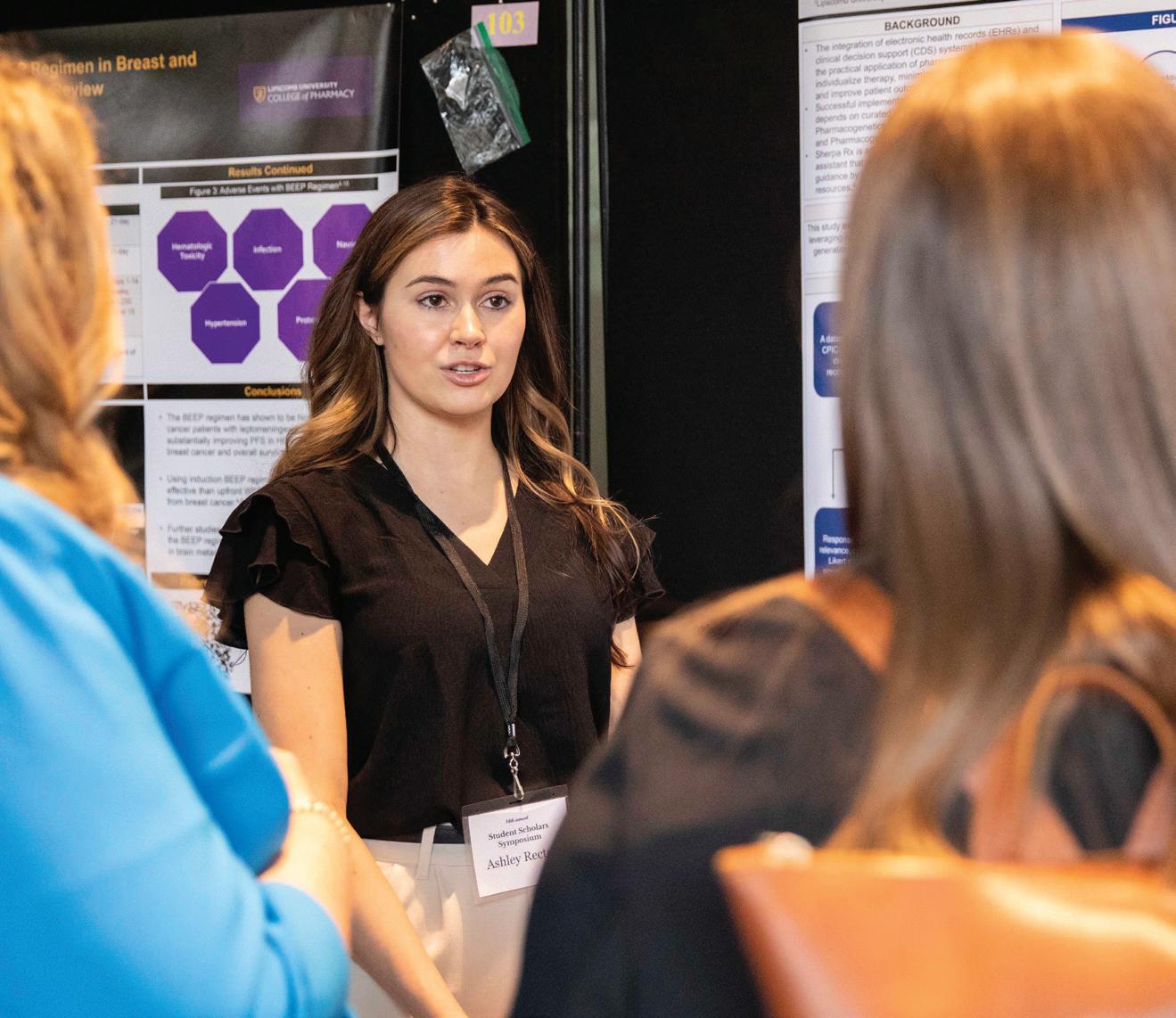
This past May marked the graduation of the first four Master of Pharmaceutical Science students from the College of Pharmacy.
Kevin Wu, Joanna Cravens, Ashley Rector and Katelyn Covington all graduated on May 3 with a Doctorate of Pharmacy and the new master’s degree focused on applied drug development research. In addition, Rector and Covington also earned a third degree, a Master of Health Care Informatics, during their four years of pharmacy study.
Established in 2023, the pharmaceutical science master’s was designed to prepare students to continue on to a Ph.D. in pharmacology or to go directly into the pharmaceutical industry workforce as research scientists, an area of high demand in contract research organizations and pharmaceutical companies.
All four students had two years of opportunities to conduct realworld applied drug discovery and clinical development research in Lipscomb’s labs and through its on-campus industry partner, Inotiv, a nationwide contract research organization.
“I thought that down the road I could see myself maybe exploring an industry position, and this master’s degree gave me a background on the industry side of things. It made me more well-
rounded and able to fit in areas that a Pharm.D. degree-holder may not usually fit in,” said Rector.
In 2024-2025, Rector, from Cookeville, worked not only on a pharmacokinetic research project in collaboration with Inotiv, but she also carried out a health care informatics project for a start-up company called SherpaRX, which is developing an AI digital platform for physicians.
Working with Scott Akers, executive director of the Pharmaceutical Sciences Research Center and associate dean of research, Rector determined the most effective dosage and timing of doses of three novel compounds given to mice. She then used Phoenix Software to scale those results up to doses sized for humans, moving the compounds one step closer to being used in clinical trials for humans.
Working with Jay Dorris (LA ’07, PharmD ’14), assistant professor of pharmacy practice, Rector developed a systematic process to test and evaluate the responses of the Helix AI platform used by SherpaRx to provide rapid pharmacogenomic information to physicians as they are providing personalized drug therapies.
The Helix AI is learning how to provide the best information compiled in the Clinical Pharmacogenetics Implementation Consortium (CPIC) and Pharmacogenomics Knowledgebase (PharmGKB) through retrieval-augmented generation (RAG) of data.
Rector worked with SherpaRX’s coders, providing suggestions based on her pharmacy expertise. For her research project she developed 10 queries for SherpaRx’s system and compared its responses to three other AI models, finding that the SherpaRX model outperformed the other three in accuracy, relevance, completeness, clarity and coherence.
“I’ve always liked research, but I didn’t realize all the opportunities that exist in pharmaceutical research until I began studying at Lipscomb,” said Rector. “It doesn’t have to be just a retail job or even a hospital position. There are lots of roles in pharmacy, and I’m really glad that I found them.”
During their pharmacy studies, Cravens and Covington worked on a project developing a way to measure the levels of three separate drugs in the blood, in support of a human clinical trial using ifetroban to treat patients with idiopathic pulmonary fi brosis. Th ey also both worked on a project titled “Have you had your vitamins today? An LC-MS/MS method to simultaneously measure B vitamins in plasma from study participants in a ‘greens’ nutritional supplement clinical trial.”
Both of these projects were presented at Lipscomb’s annual Student Scholars Symposium.
Wu conducted tests on a novel peptide drug to see if it is effectively absorbed into the body to treat heart arrhythmias. Wu, a Nashville native with a chemistry and engineering bachelor’s degree, found that only 16% of the drug administered as an oral dosage form reached the bloodstream.
At the 2025 Student Scholars Symposium, Wu presented “In Vitro and In Vivo Preclinical Development of the Cyclopeptide Ent-Verticilide for the Treatment of Cardiac Arrhythmias,” and won outstanding presenter in his session.
When Barry Wortz (MFA ’24) entered Lipscomb’s film and creative media program in fall of 2022, he expected to earn a degree to allow him to teach in higher education full-time. He did not expect to kick off a journey of self-discovery that would lead to creating a film focused on a little-known issue in America: the struggle for employment by those on the autism spectrum.
Wortz’s capstone project for his MFA, a documentary titled Lost Potential: Unmasking the Autism Employment Crisis, took a year of research, interviews and production to complete. It screened on campus in April and is being scheduled at conventions, conferences and organizations across the country to raise awareness of the autism employment crisis.
It is a deeply personal film for Wortz, whose own journey is followed in the film along with key statistics, success stories and an interview with Dr. Temple Grandin, a pioneer in advocacy for people with autism. Wortz was diagnosed with level 1 autism and attention deficit/hyperactivity disorder in 2023 as an adult, after having already made his way in the working world and starting a family.
“Of all disabilities, autism ranks the lowest for employment. Nearly eighty percent of people with autism, worldwide, are unemployed or underemployed,” said Wortz, who is also employed at Lipscomb as a graduate recruiter and an adjunct instructor for the George Shinn College of Entertainment & the Arts. “Lost Potential will explore societal attitudes and misconceptions that hinder the inclusion of people with autism in the workforce,”
Wortz’s decision to include his own journey with autism came after speaking with a producer of the A&E show The Employables, which follows job seekers with conditions such as autism or Tourette Syndrome. The producer encouraged him to share his own

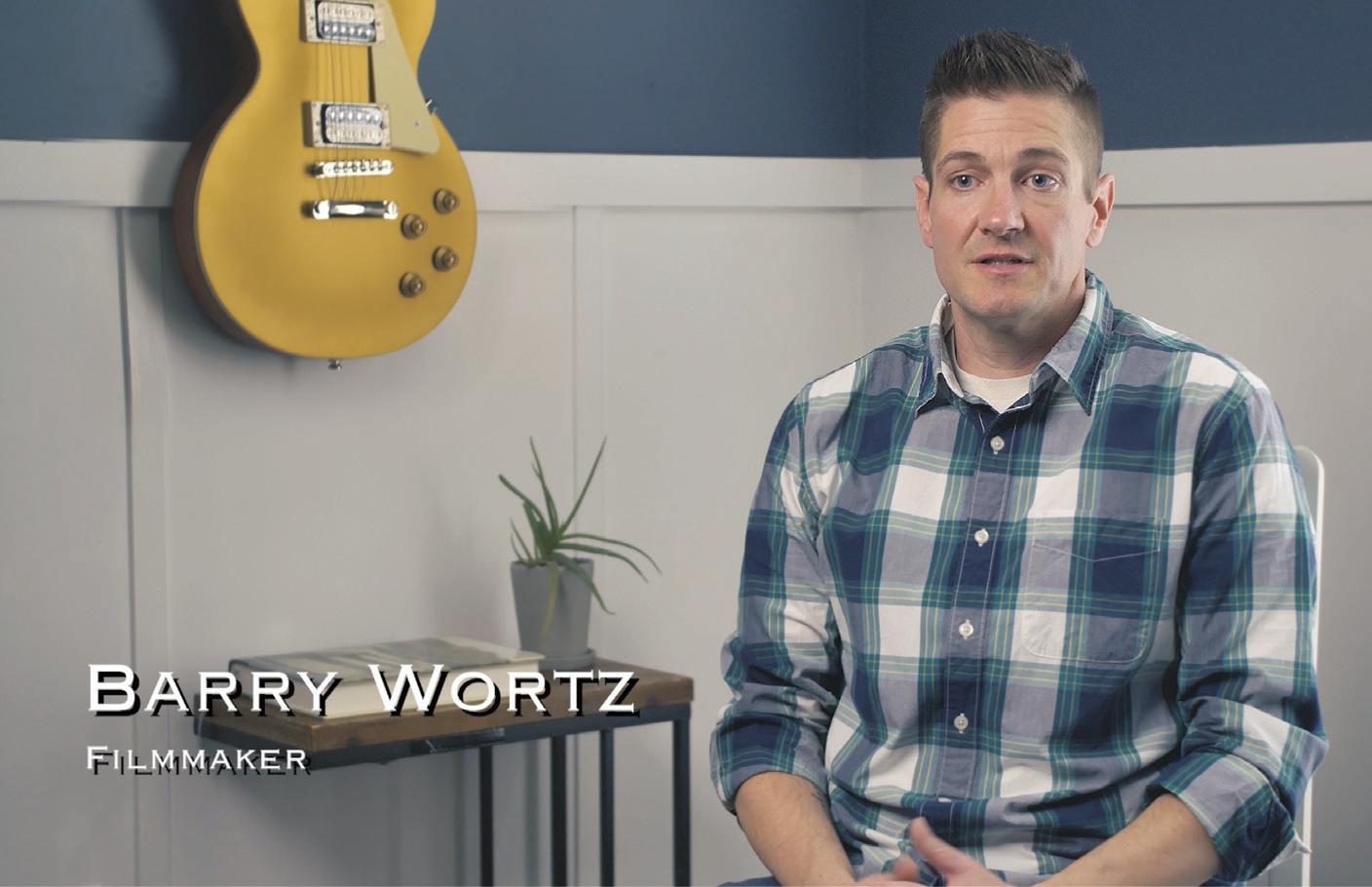
story as the central throughline of the film. “He told me, ‘Your story is everybody’s story,’” said Wortz.
In the film, Wortz explores how the stigma around people with autism developed throughout history. To prepare, Wortz read through historical articles in medical journals and watched medical reels on how people with autism were treated in eras when they were often institutionalized.
The film shares success stories of individuals with autism who have overcome barriers and excelled in their chosen careers and showcases organizations that have implemented inclusive hiring practices, emphasizing the positive impact on both employees and the workplace.
“Autism affects nearly eighty million people across the globe and companies should embrace the value, strength and talent of people on the spectrum,” said Wortz.
The film also shows the broad range of capabilities of different people with the diagnosis.
“I want to help people understand that it is called ‘the spectrum’ for a reason. You can’t assume one person with autism is just like every other person with autism,” said Wortz. “It is very individualized. One thing Temple (Grandin) said in her interview is that if you’ve met one person with autism, you’ve only met that ONE person with autism.”
Learn more about Barry Wortz’s personal journey at lipscomb.edu/wortz






American Society of Health-System
Pharmacists Midyear College of Pharmacy
New Orleans, December 2024
Mentor: Dr. Jay Dorris
Preslie Breton and Benjamin Brewer

Mentor: Dr. Sarah Uroza
Mikayla Morrow
“Effects of Patient Assistance Programs at Faith Family Medical Center”
Mentor: Dr. Chelsea Renfro of Vanderbilt University Medical Center
Strong Oboh

Society of Biblical Literature
National Meetings


Lanier Center for Archaeology
San Diego, California, November 2024
Charissa Wilson
“Social Transitions at Tel Gezer: Household Identity and Integrated Communities in the Late 10th Century BCE”
Evangelical Theological Society
National Meetings
Lanier Center for Archaeology


San Diego, California, November 2025
Terrence Nichols
“A Biblical Reference to the Pharaoh Merneptah’s Campaign? The Four Conditions of Exodus 23:28-30”
American Schools of Overseas Research (National)
Lanier Center for Archaeology
Boston, Massachusetts, November 2024

Lipscomb’s graduate students not only have the opportunity to carry out their own research, they also have the opportunity to share it at academic conferences across the country. Check out where many of our Lipscomb Bisons have been sharing their own discoveries over the past year.
American Academy of Religion-
Southeast Region

Lanier Center for Archaeology
Miami, FL, March 2025

“Developing an Open-Source NLP Tool for Improved Interpretation of Medication Orders in EHR Systems and Joint Commission Compliance”
Mentor: Vanderbilt University Medical Center
Benjamin Brewer

“Optimizing Maribavir Management: Role of a Health System Specialty Pharmacy in Access, Monitoring and Waste Reduction”
Mentor: Dr. Autumn Zuckerman of Vanderbilt University Medical Center
Ashley Rector

Mentors: Dr. Mark D. Janzen and Dr. Steven M. Ortiz
Christopher Jenkins
“How Important was Judah in Egypt’s Imperial Administration of the Southern Levant in the 7th Century BCE?”
Global Voices

College of Education
Nashville, April 2025

“Implementation of a Tableau Dashboard to Evaluate Severe Hypoglycemic Events at a Large Tertiary Academic Medical Center”
Mentor: Dr. Angie Maynard
Destiny Carroll
“Exploring Therapeutic Frontiers: The BEEP Regimen in Breast and Brain Metastases—A Systematic Review”
Mentor: Dr. Andrew McRae of Vanderbilt University Medical Center
Ally Duffy

“Finding Consensus for Rheumatoid Arthritis Specialty Pharmacy Outcome Measures: A Modified Delphi Methodological Approach”
American Pharmacists Association Annual Meeting College of Pharmacy
Nashville, March 2025
Mentor: Dr. Aseala Abousaud, Emory University
Katelin Baird

Mentors: Dr. Lisa Davies and Dr. Suze Gilbert
Delandris Moore, Aylnn Gilmore and Felicia Tran
“Using Literacy to Navigate Grief and Loss”
Mentor: Dr. Lisa Davies
Emily Morrison, Sarah Walker and Kimberly Smith


“Implementation of a Just Culture in the Cardiovascular Intensive Care Unit”
Mentor: Dr. Justin Kirby
Kaleigh Harrell
“The Effects of Remote Monitoring Platforms Toward Glycemic Control in Patients with Diabetes”
Mentor: Vanderbilt University Medical Center

“Outcomes of Interferon Treatment in CTCL: A Single Center
Retrospective Review”
Mentor: Dr. Sarah Collier
Lino Gaglio and Katelin Baird
“H. pylori Infections Linked to Gastric Cancer Disparities Across Hispanic Populations Throughout the United States: A Systematic Review”

James Gilbert
“The Archaeological Excavations at Medieval Ilibalyk- Echoes of a Syriac-Turkic Community from the Church of the East in Central Asia”
Matthew Bronson
“A Reanalysis of the Handmade, Uprightwalled, Flat-bottomed Cooking Pot of the Middle Bronze Age Southern Levant”


American Schools of Overseas Research (Regional)
Lanier Center for Archaeology
Miami, Florida, March 2024
Marcella Barbosa Rigsby
“A New Understanding of the Cultic Complex at Tel Burna”
Christopher Jenkins


“How Important was Judah in Egypt’s Imperial Administration of the Southern Levant in the 7th Century BCE?”
Bruno Soltic
“Transitions in Archaeology: An Interview with Dr. Israel Finkelstein”

“Classroom Connections: Research-based Tools for Supporting Diverse K-12 Learners”
School Counselor
Administrator Leadership Institute
College of Education
Murfreesboro, September 2024
Mentor: Dr. Karen Whidby

Kimberly Howard and Sydney Jones “Building Capacity in School Counseling”
AWARE Student Council Conference College of Education Nashville, March 2025
Mentor: Dr. Lisa Davies

Tara Ladsavong and Benjamin Brewer
“Evaluation of Rocuronium Dosing Strategies in Rapid Sequence Intubation”

ORAL PRESENTATIONS

POSTER PRESENTATIONS

Madison Trebendis and Megan O’Rourke
“Behavioral Pathways to Health Careers Project”


Investigating the use of indole compounds as potential therapeutics for the treatment of necrotizing enterocolitis
Arlo Colvard, Biology
“You are the Potter I Am the Clay” … Tracing Egyptian Creation, Cult and Ritual Power Motifs in the Pentateuch
Christopher Jenkins, Archaeology

Investigating the Effects of Body Composition Assessment on Dietary Intake in Division I Football Players
Cameron Nill, Nicole DiCicco, Nutrition
Pharmacokinetic-guided
Optimization of High Dose Oral Montelukast in Children with Acute Asthma Exacerbations

9-Online Virtual Baseball Conference
College of Health Sciences Virtual, October 2024
Mentor: Andrew Maudlin
Caleb Waller (BS ’24, MS ’25)
“The Impact of Music on Workout Performance in Collegiate Baseball Players”


In Vitro and In Vivo Preclinical Development of the Cyclopeptide Ent-Verticilide for the Treatment of Cardiac Arrhythmias
Kevin Wu, Pharmaceutical Sciences
Impact of an Educational Intervention on Pharmacy Students’ Knowledge, Attitudes and Confidence Regarding Alcohol and Substance Use Disorders
Lina Itenberg, Pharmacy Practice

Dana Dishman, Pharmaceutical Science
Examining the Influence of Mapped Bloom’s Taxonomy Items on the Student Pharmacist Experience
Annaston Young, Pharmaceutical Science



In April, the College of Pharmacy announced plans to launch a new Certified Anesthesiologist Assistant (CAA) master’s program to meet a growing demand in the health care workforce. The program would be the first university in Tennessee to offer this highly specialized training.
CAAs provide specialized care before, during and after anesthesia, working in close partnership with anesthesiologists to ensure patient safety and optimal health outcomes. The anesthesiologist assistant job market is projected to grow nationwide by 26.6% by 2032 with an estimated median salary of $215,000.
“A unique feature of our program will be its inclusion within a College of Pharmacy. Because the anesthesiology practice is heavily focused on the utilization of pharmacologic agents, this relationship will provide a robust educational opportunity for our students unlike any other in the nation,” said Dr. Tom Campbell, dean of Lipscomb’s College of Pharmacy. “As the only program of its kind in Tennessee and one of a select few nationwide, we are
excited to provide a pathway for students to contribute meaningfully to the health care field.”
Lipscomb’s students may complete their degree in 24-months. The program will include coursework in areas such as pharmacology, airway management, perioperative assessments, anesthesia monitoring and technology with an appropriate sequence of classroom, laboratory and clinical activities.
Admissions to Lipscomb’s program will be competitive, with incoming students required to complete the MCAT exam and preference given to applicants who have a pre-professional undergraduate degree or work experience in health care.
As new Tennessee legislation regarding anesthesiologist assistants goes into effect in January 2026, applications for admission are opening this summer. The program has been approved by the Southern Association of Colleges and Schools Commission on Colleges, the Accreditation Review Committee for Anesthesiology Assistants and Lipscomb’s academic council. Classes will begin in June 2026.


This August, Lipscomb’s first six Master of Science in sport analytics students will graduate, taking advanced skills in data management, visualization and interpretation into this rapidly expanding field.
Graduates Carter King (MS ’25), Caleb Waller (BS ’24, MS ’25), Connor Butler (MS ’25) Cade Botts (MS ’25), Jack Morris (BBA ’24, MS ’25) and Chad Farler (MS ’25) are prepped to enter careers in professional and collegiate sports, e-sports, finance, media and sports marketing agencies.
During their studies, these students carried out research, running statistics-based regression models on questions such as how music affects the strength and conditioning of baseball players and how can analytics help predict Cy Young winners in professional baseball.
Members of the 12-student, online cohort also competed against other universities in a “data bowl”, where they ran regression models on a dataset with 100-150 different variables related to sports marketing to predict which variables had a significant relationship with consumer viewership.
The six graduates also carried out capstone research projects in partnership with local organizations such as Lipscomb Academy, PBR Baseball and Lipscomb Athletics.
Learn more about the unusual life journey of sport analytics graduate Caleb Waller at lipscomb.edu/waller

At Lipscomb University, research begins with a deeper purpose; it’s not simply about data and discovery. Rooted in faith and driven by purpose, our students and faculty are boldly exploring solutions to the world’s greatest challenges, from ethical health care innovations to sustainable environmental practices and community-focused social impact.
Your support makes this possible. Your investment empowers innovation that bridges science and service, academics and action, as well as intellect and integrity. You ignite callings that help
shape a world where faith and innovation walk hand in hand. Your gift supports groundbreaking research that integrates faith, learning and service—equipping future leaders to think critically, act compassionately and serve faithfully to positively impact the world.
In classrooms and laboratories every day, the future is being discovered and crafted by Lipscomb Bisons. YOU can be a catalyst of change, unleashing the full potential of human ingenuity that makes the impossible possible.
Make a gift today to support students who faithfully serve and impact the world.
